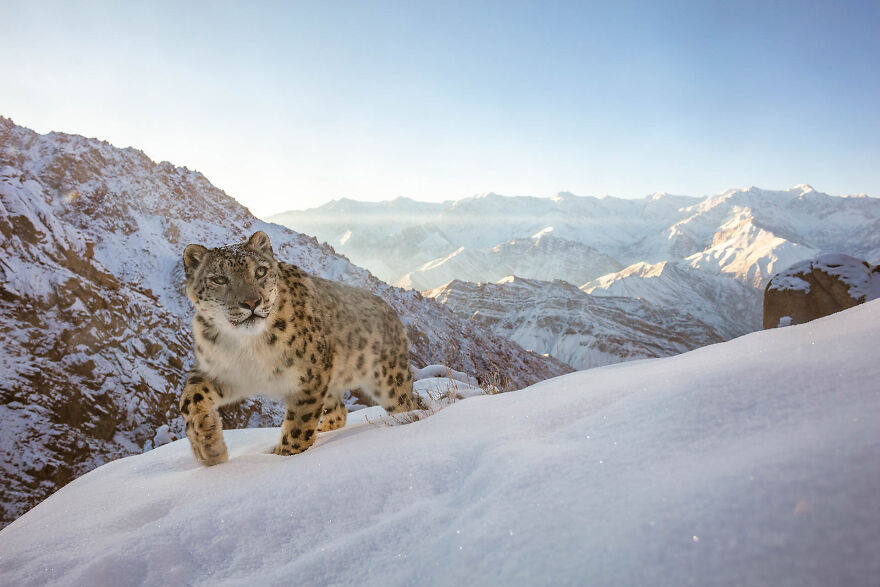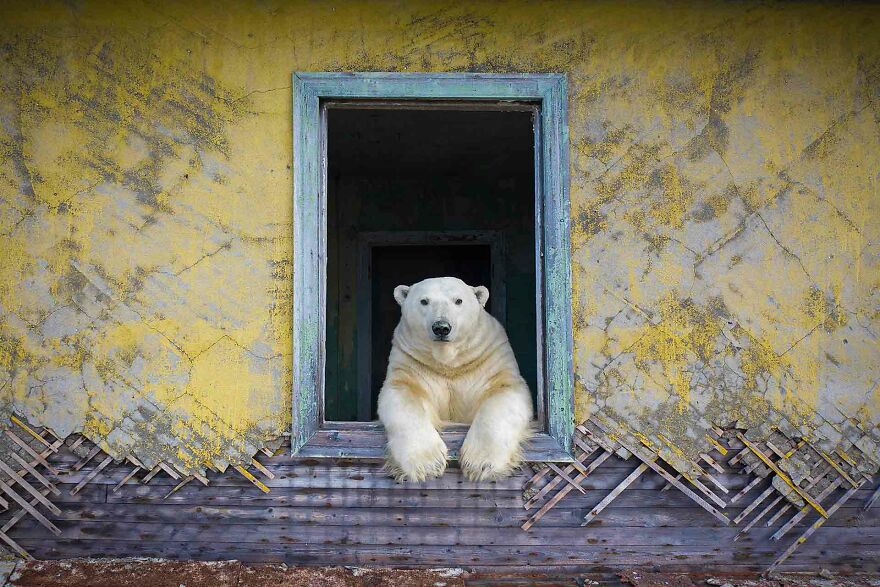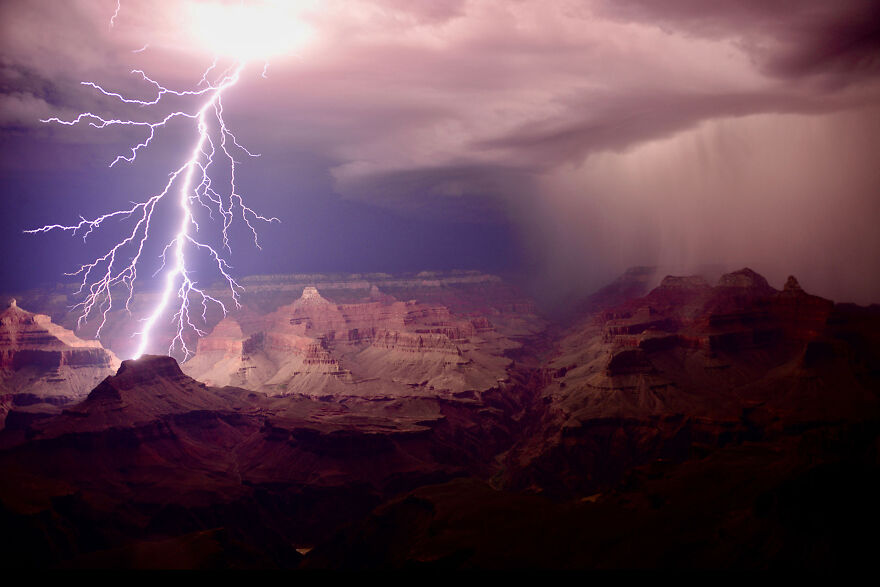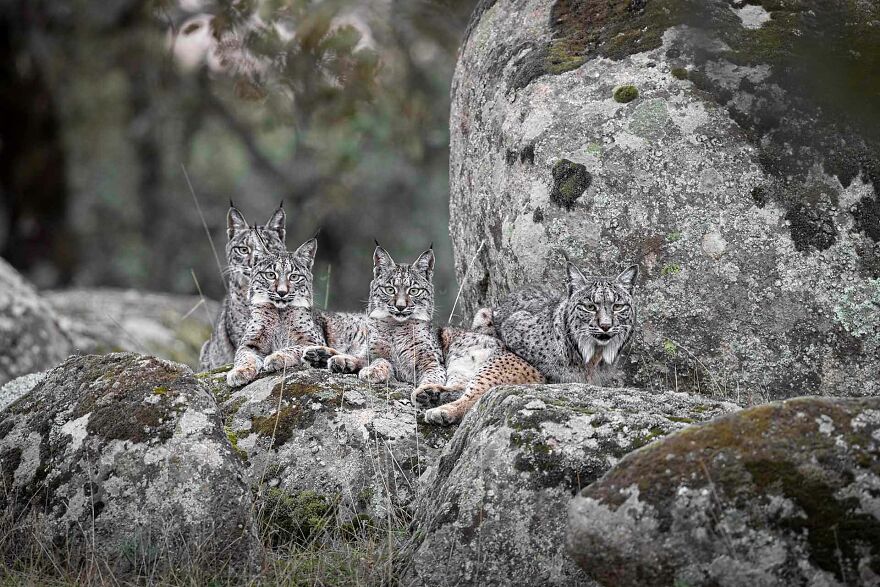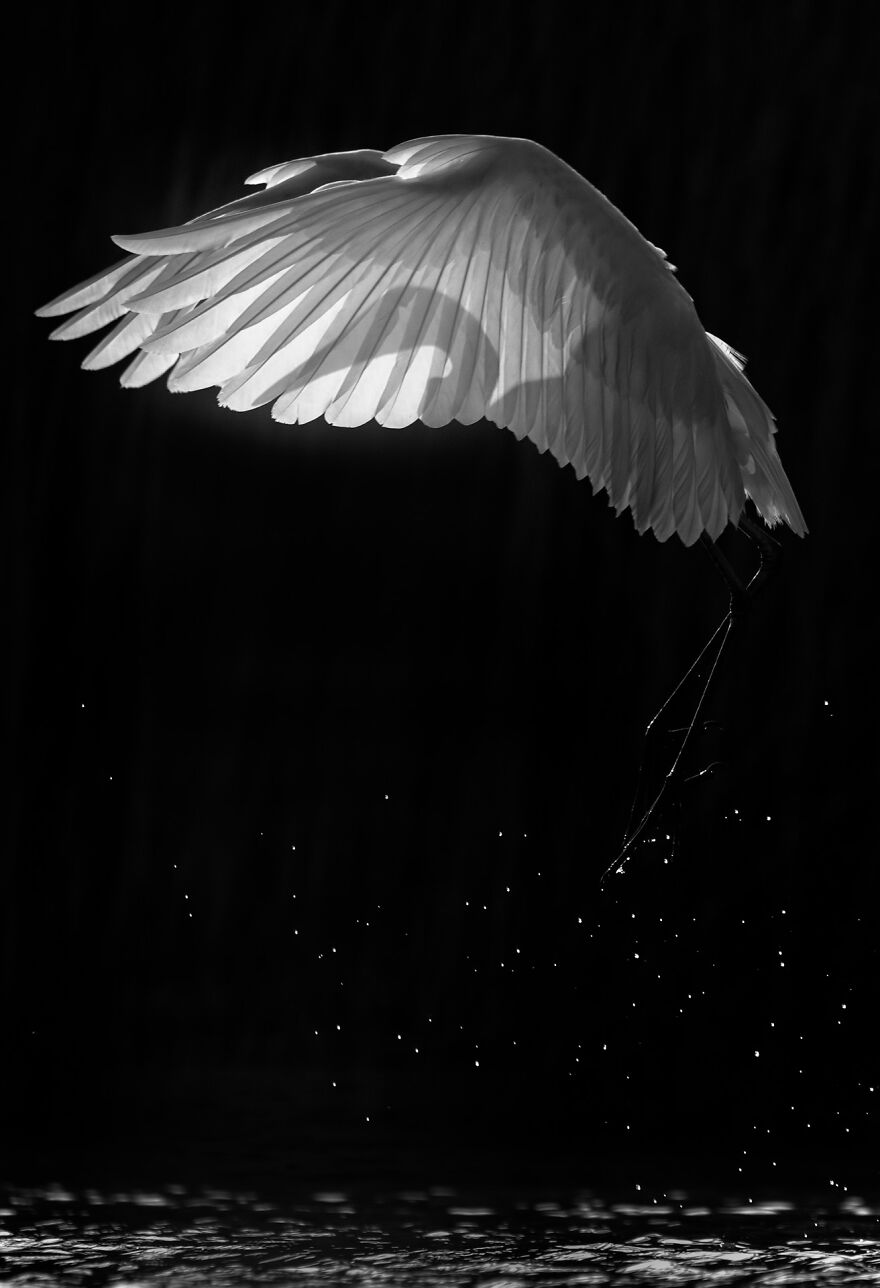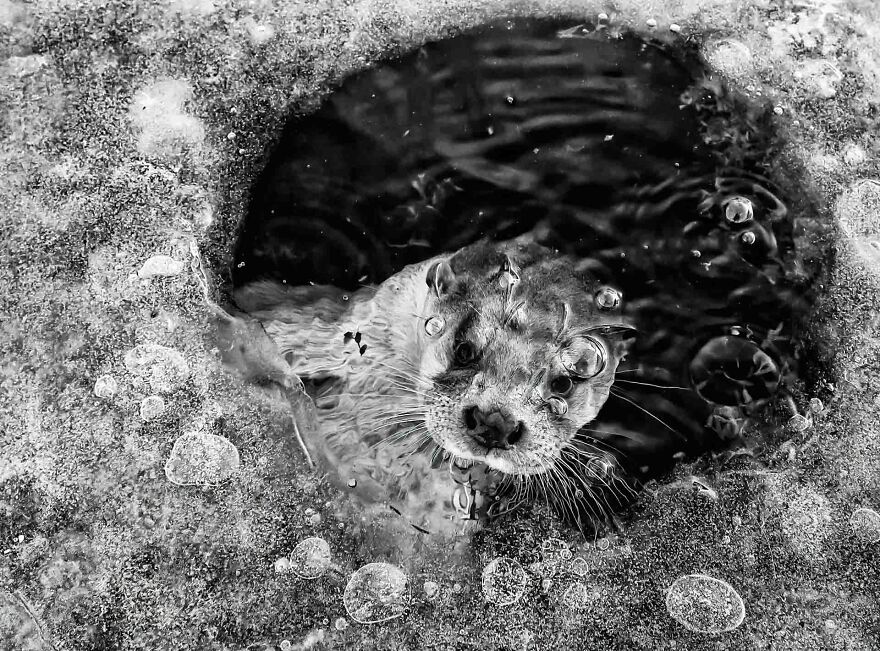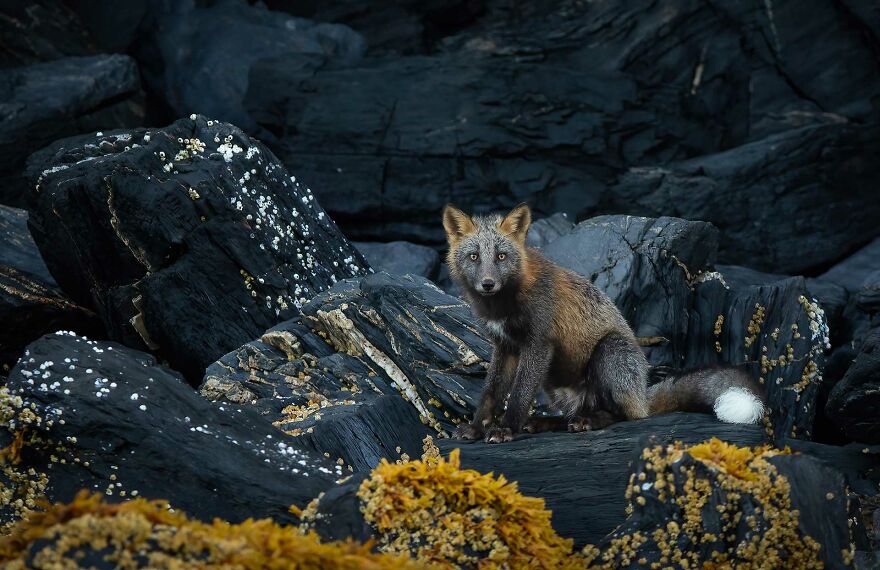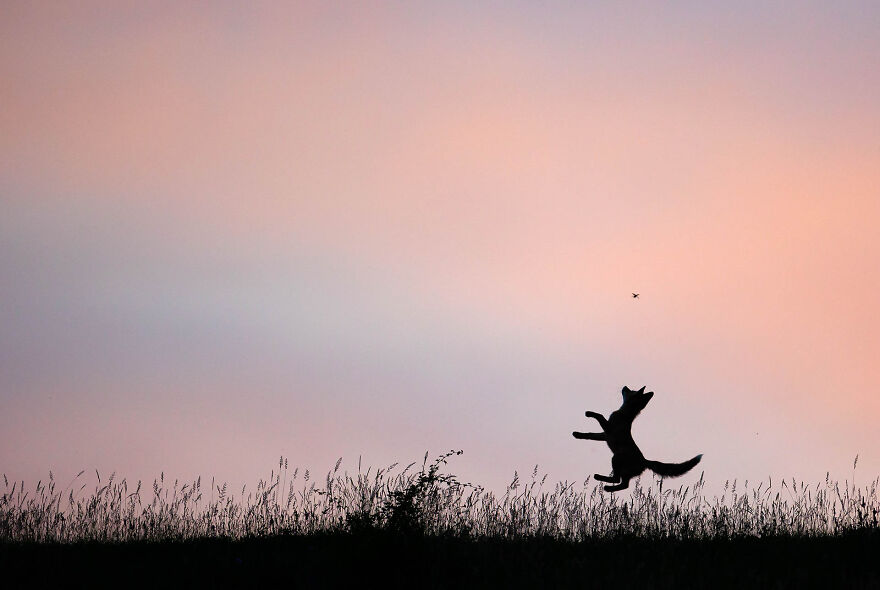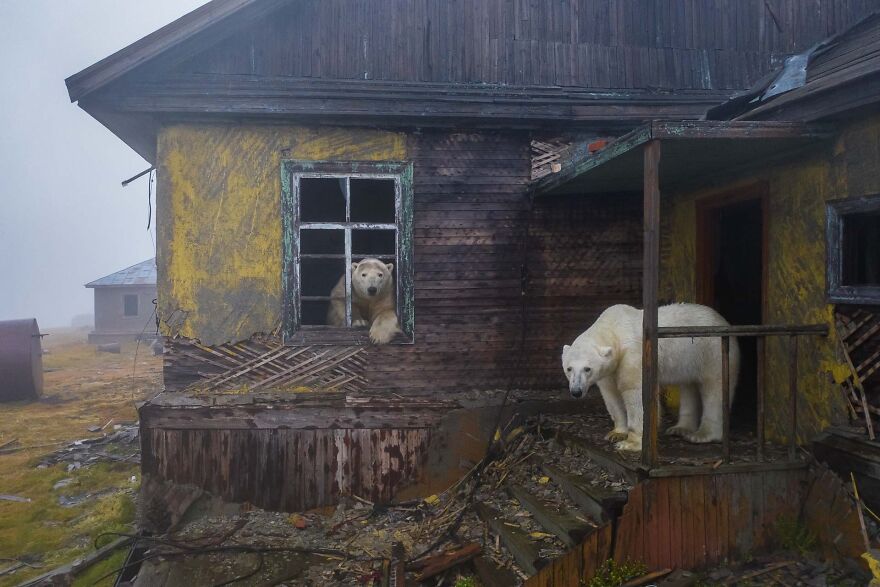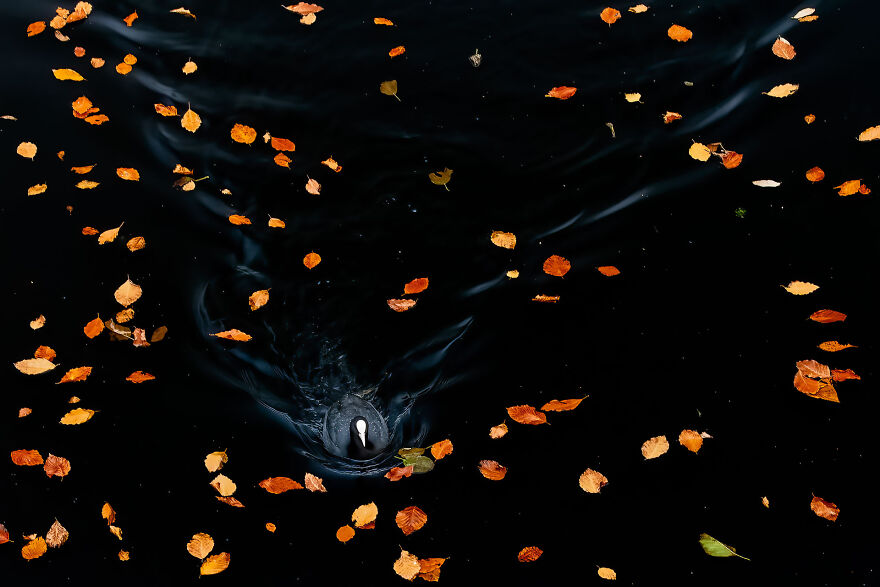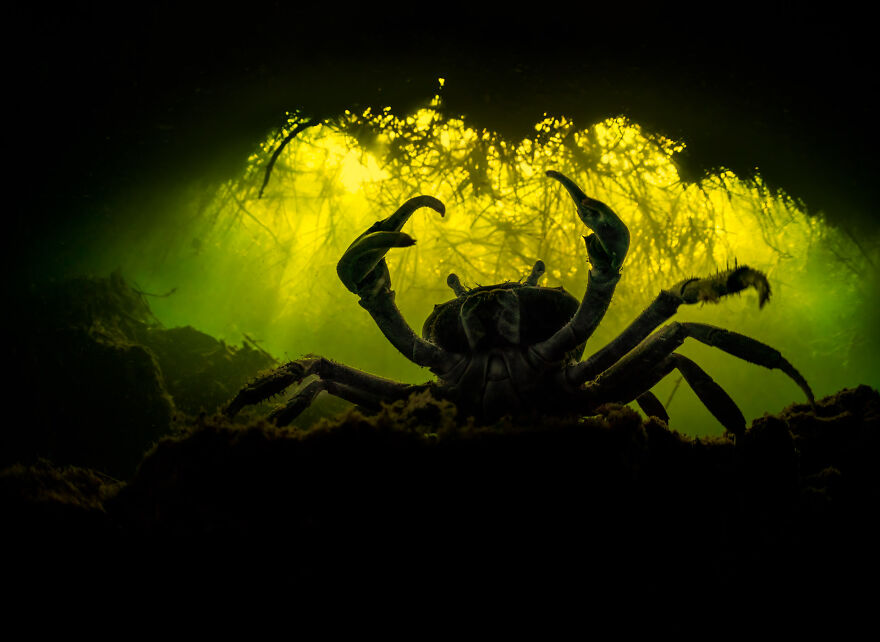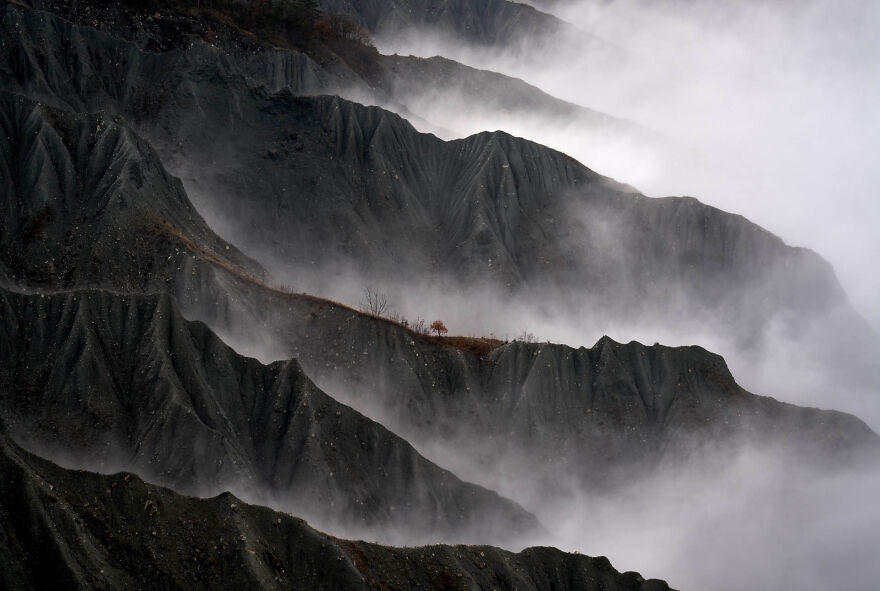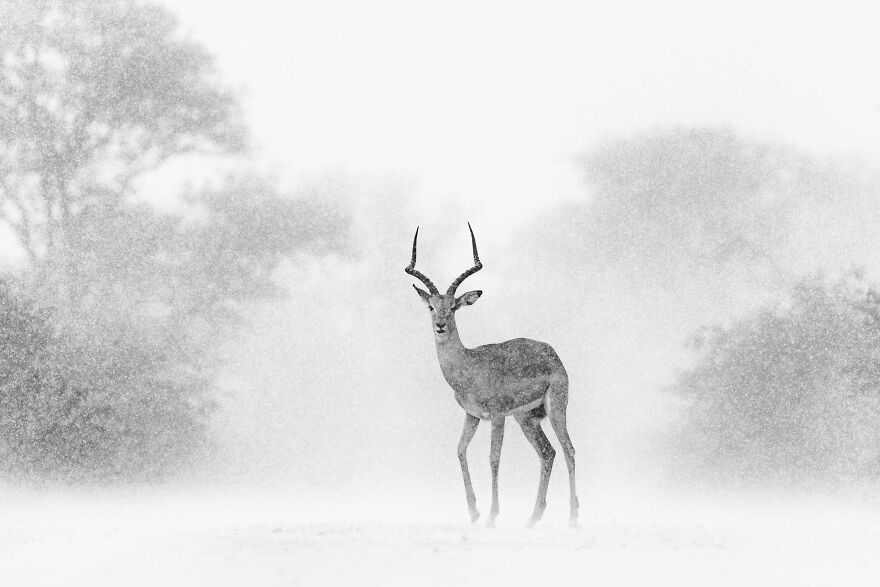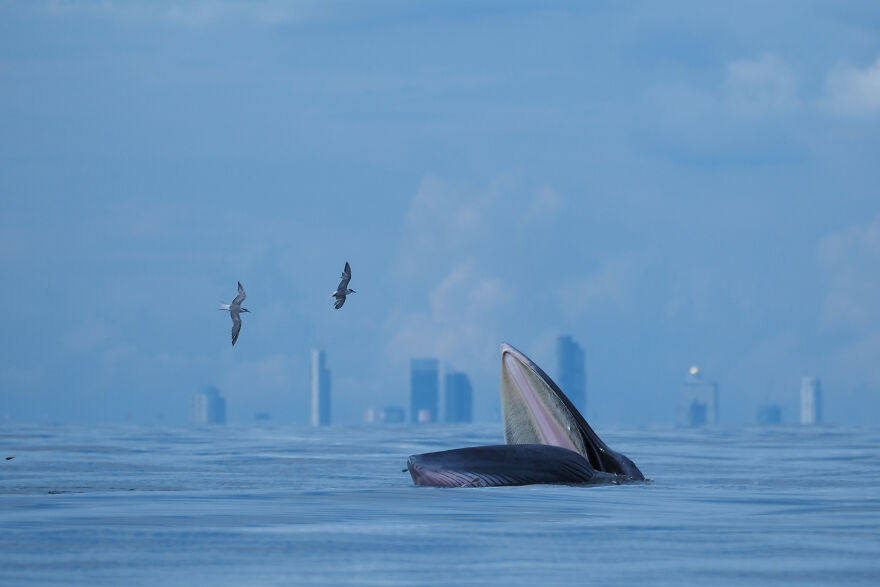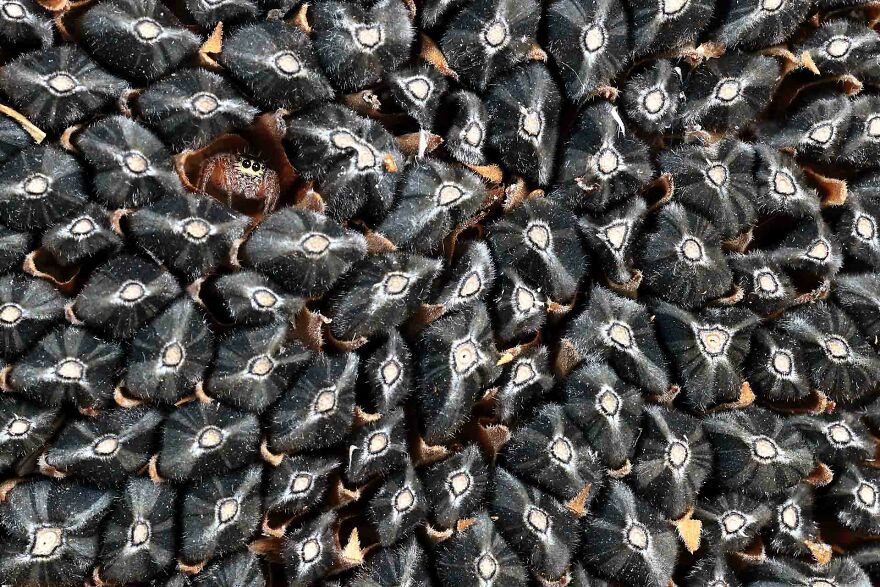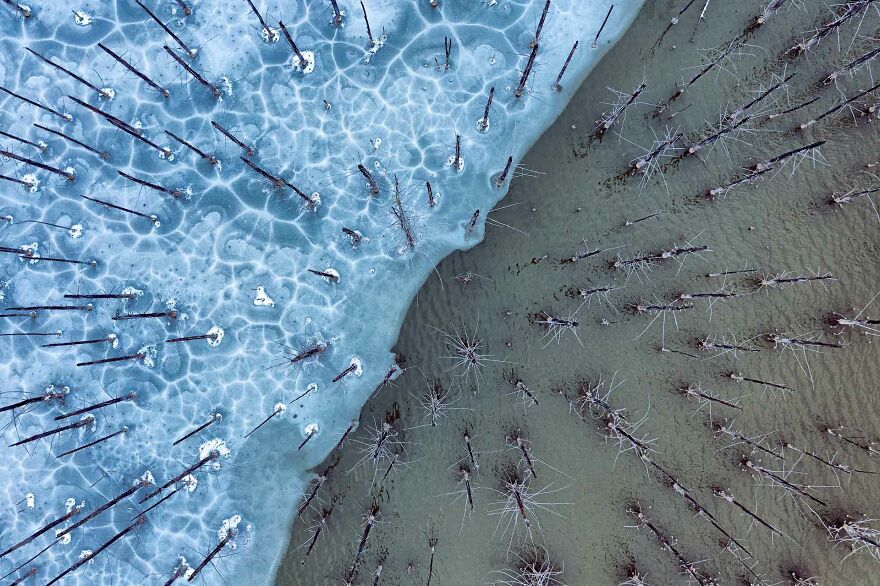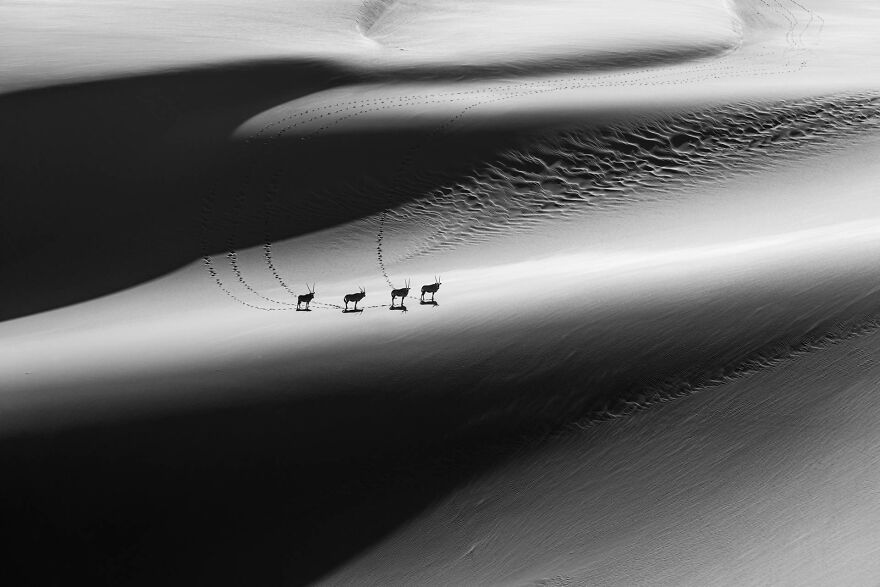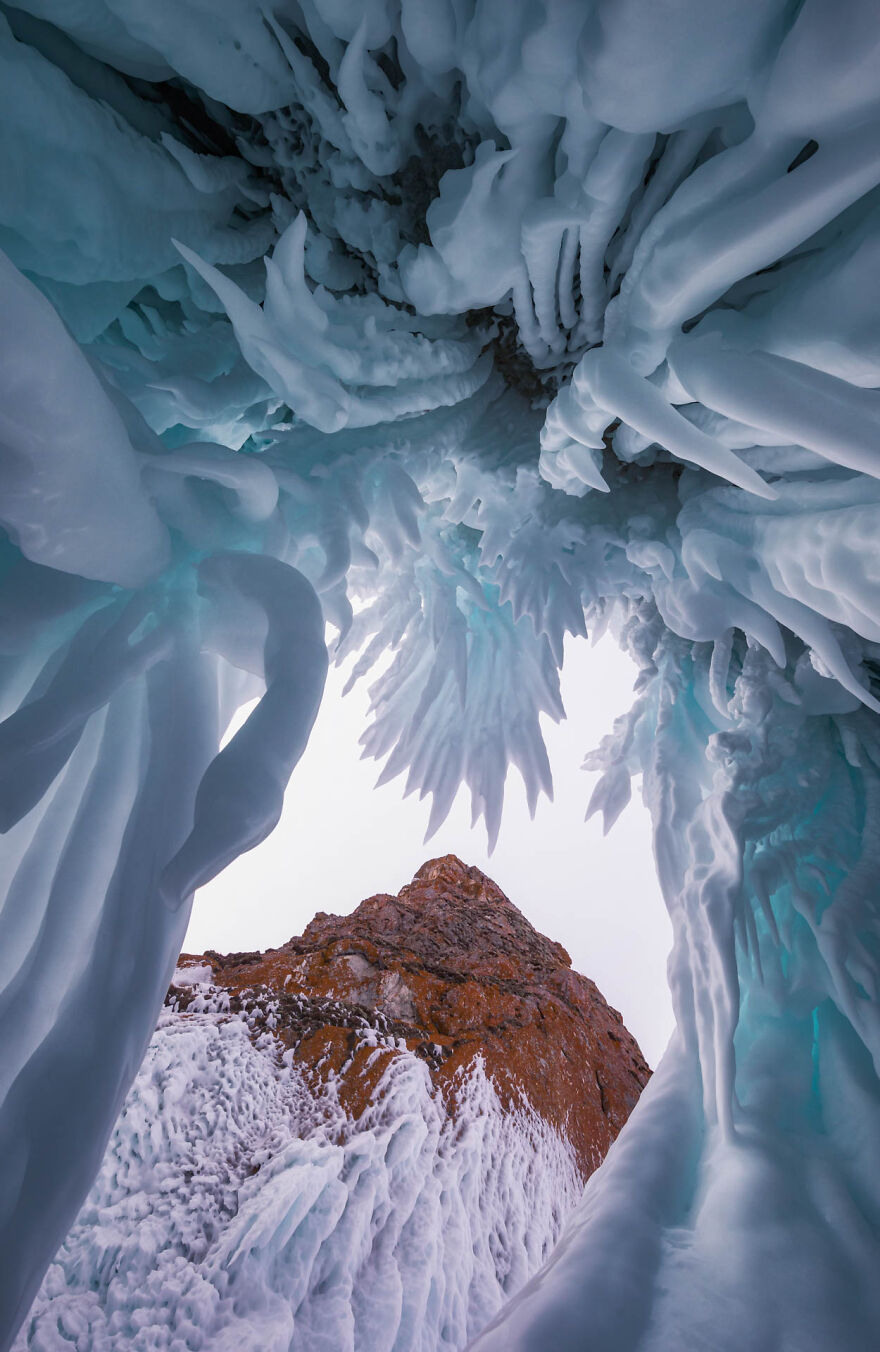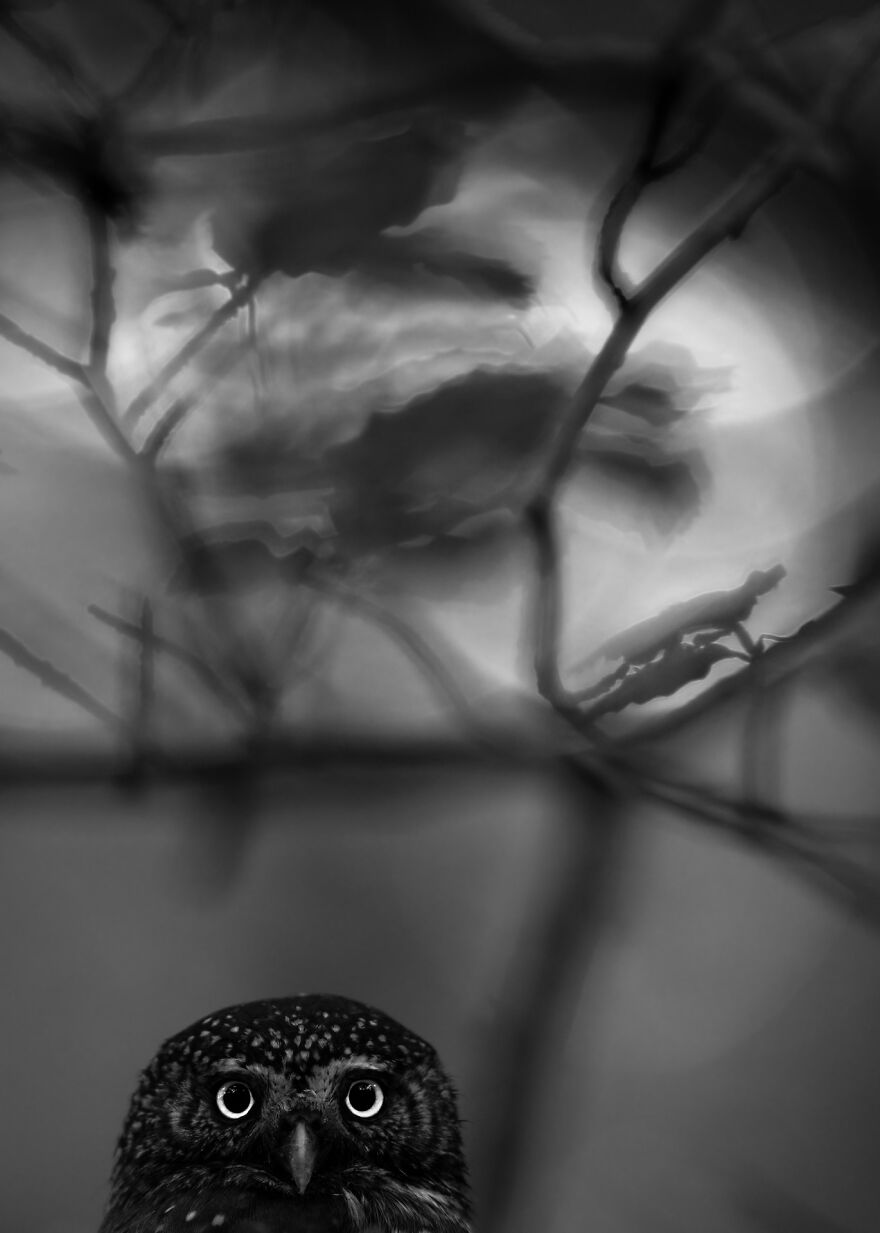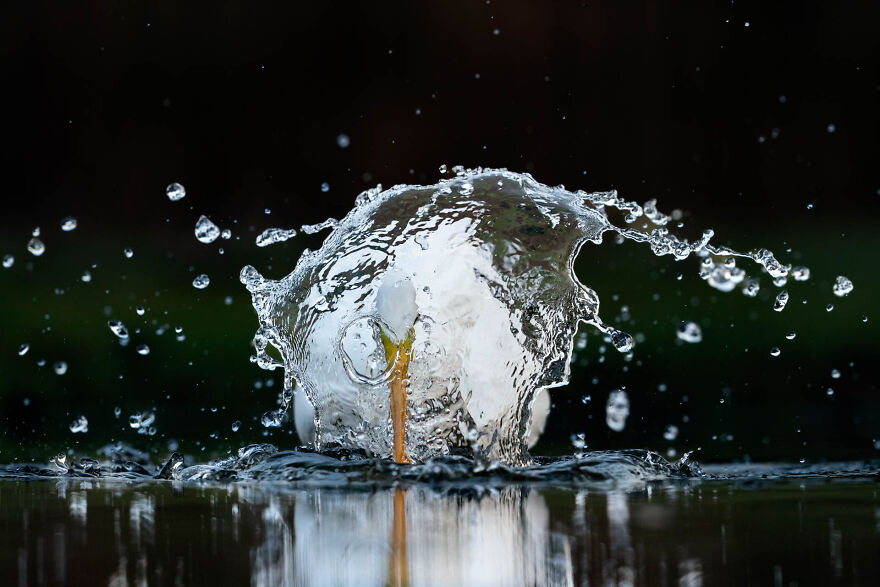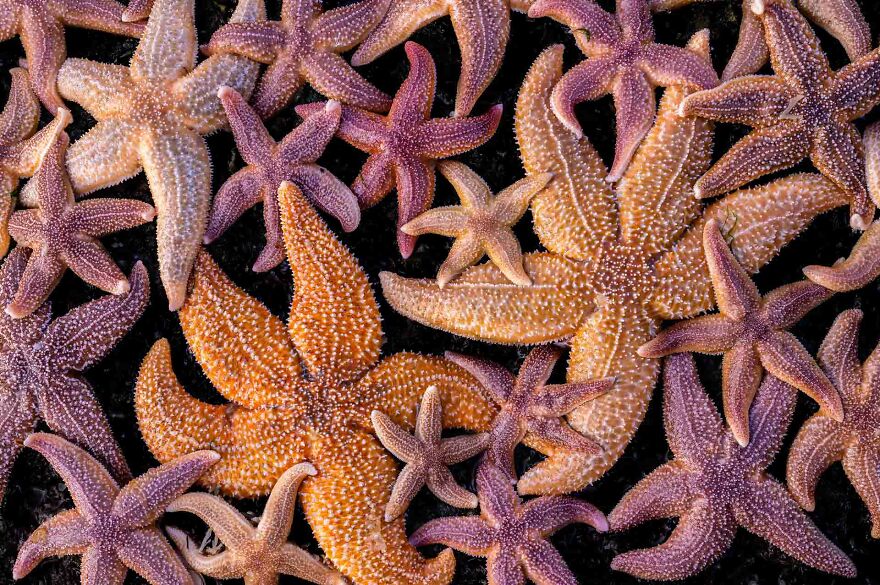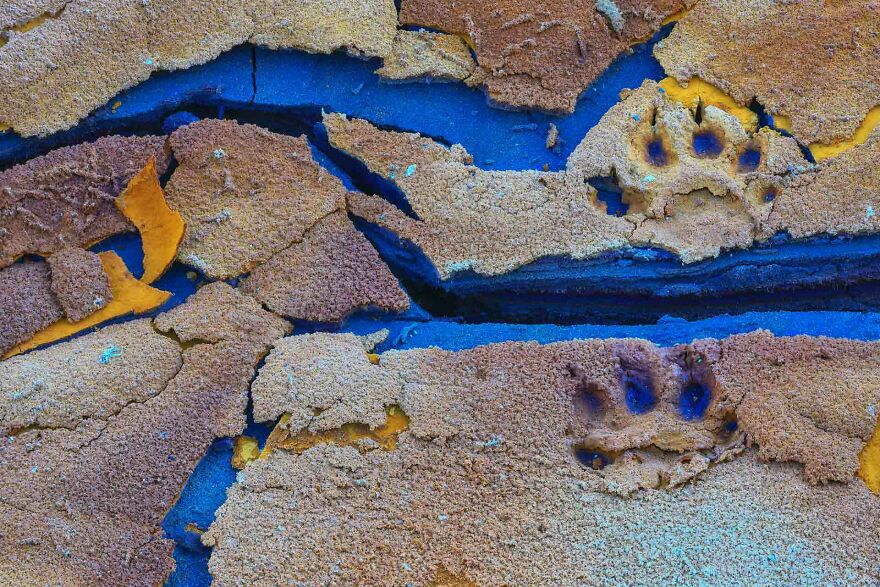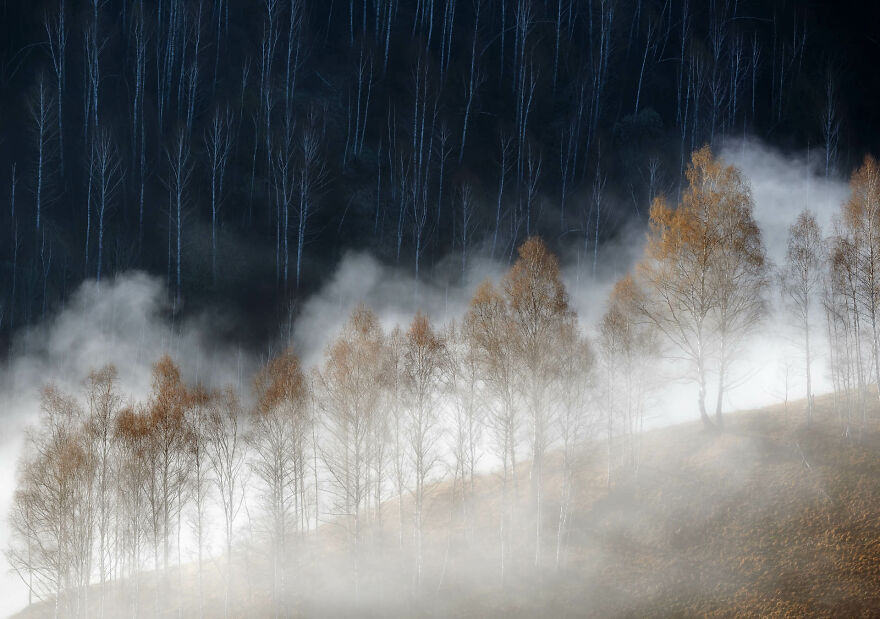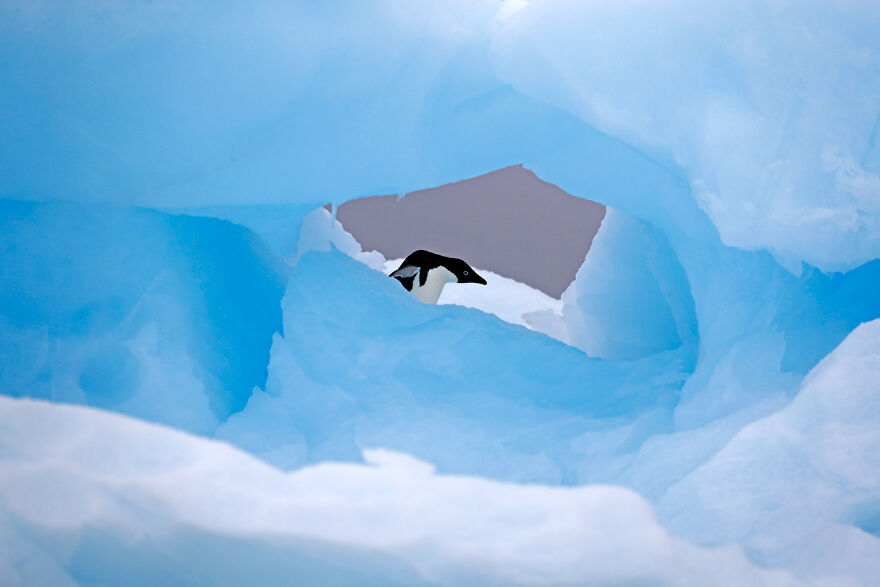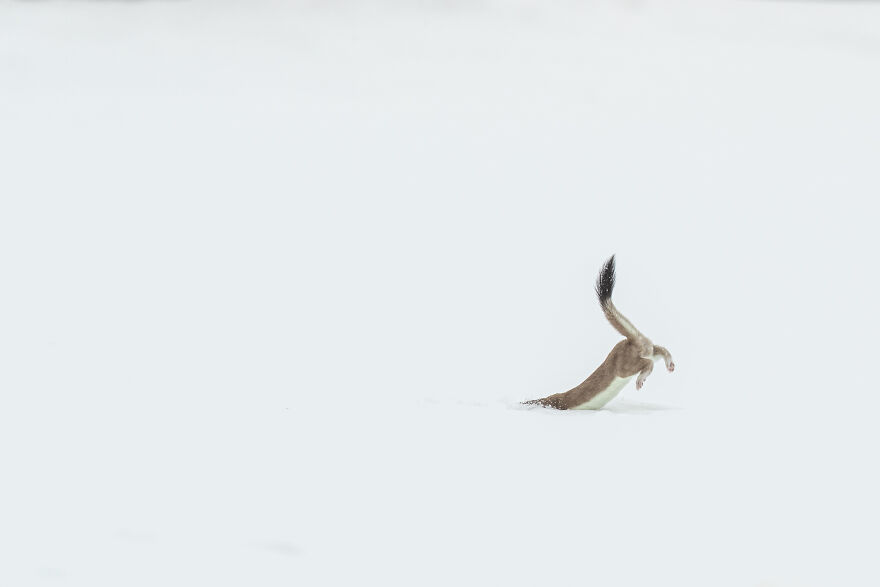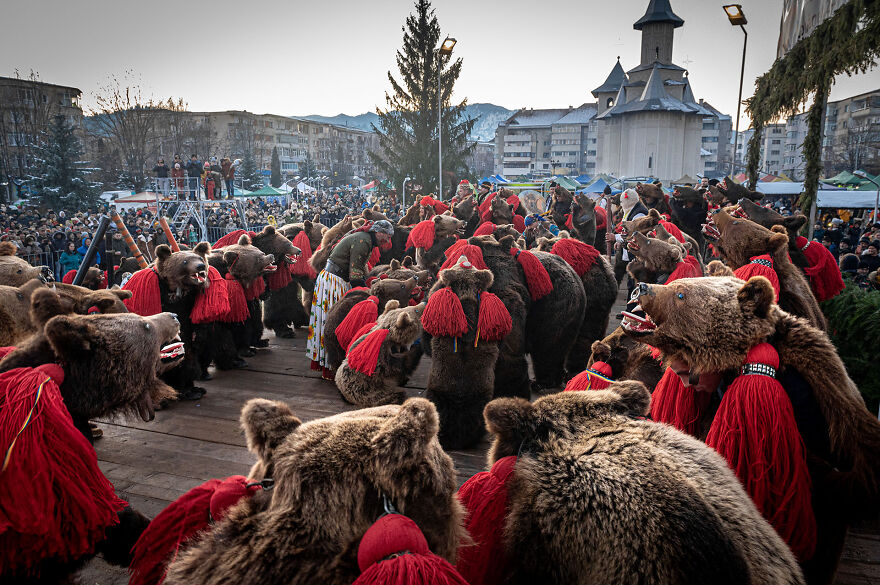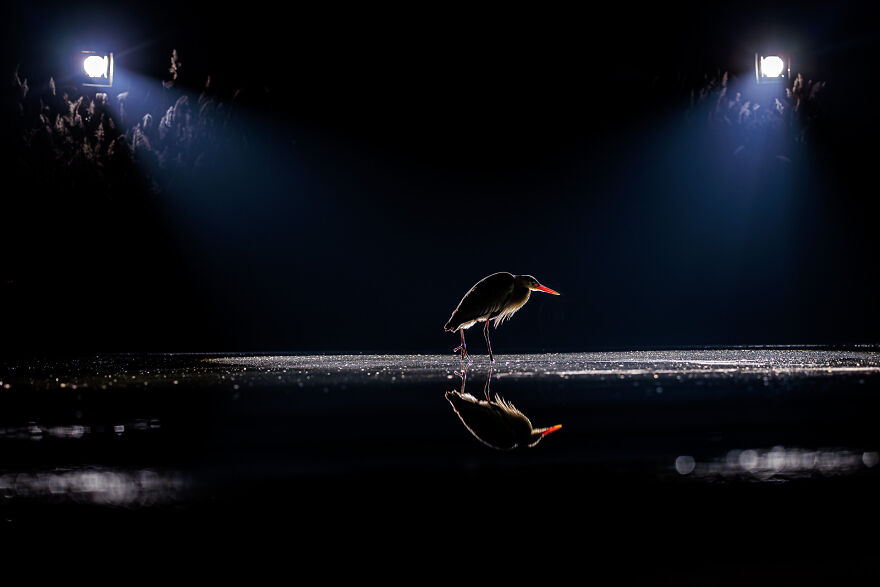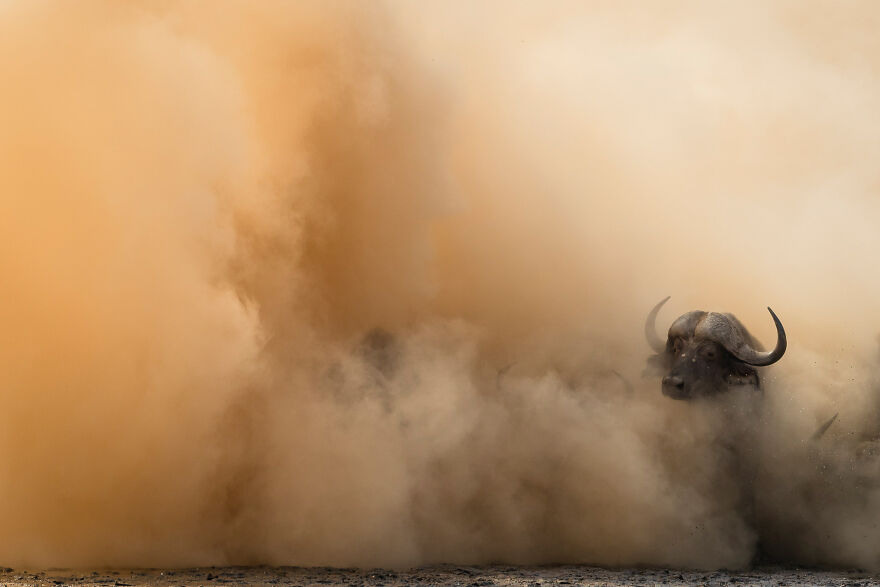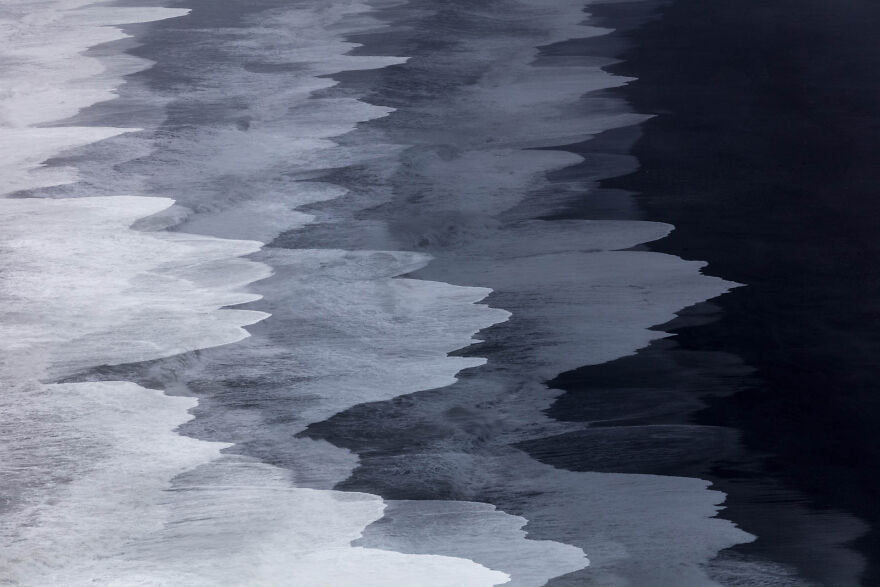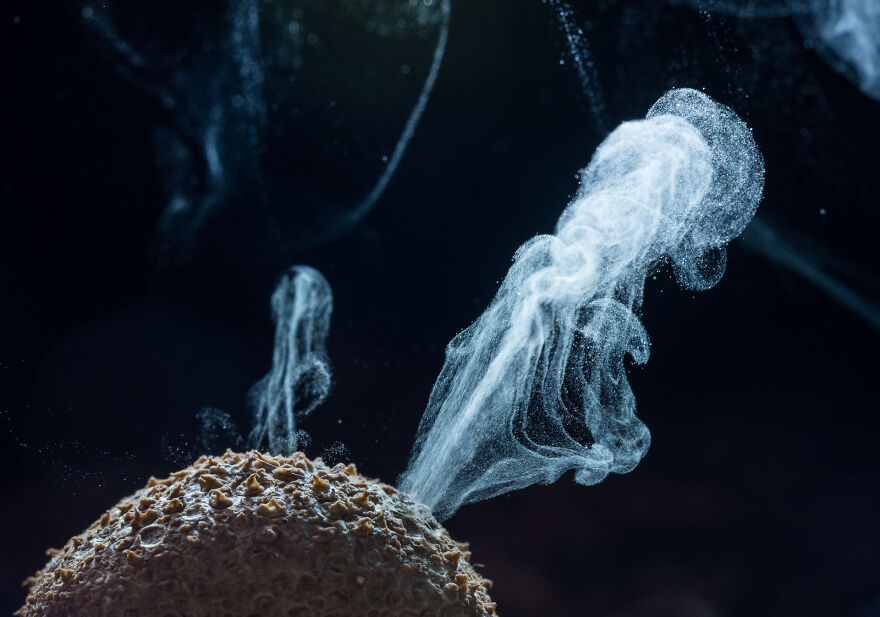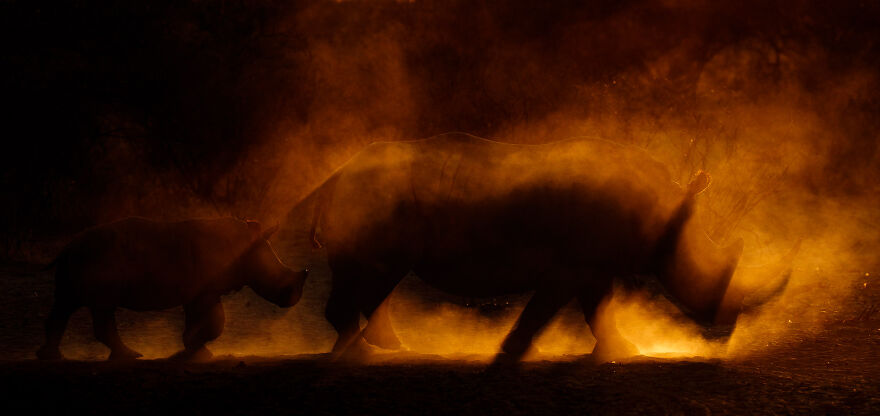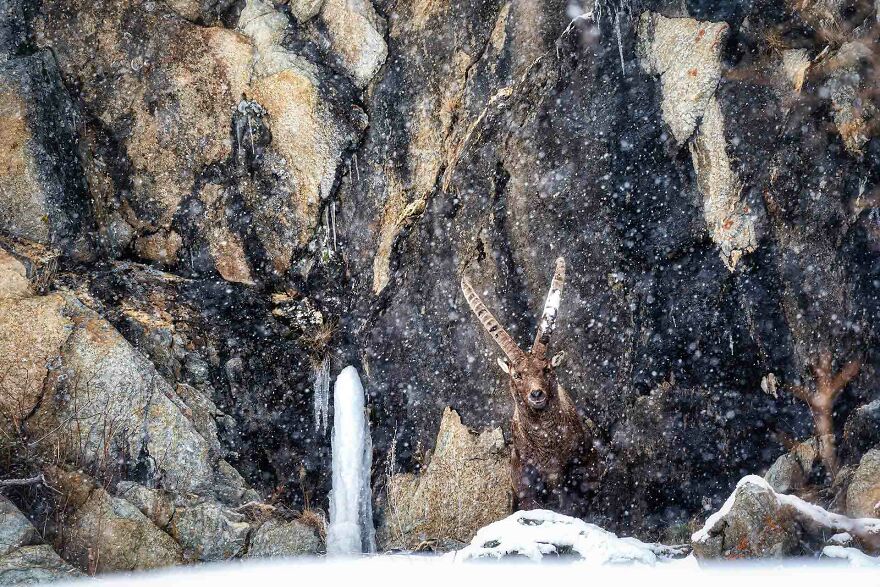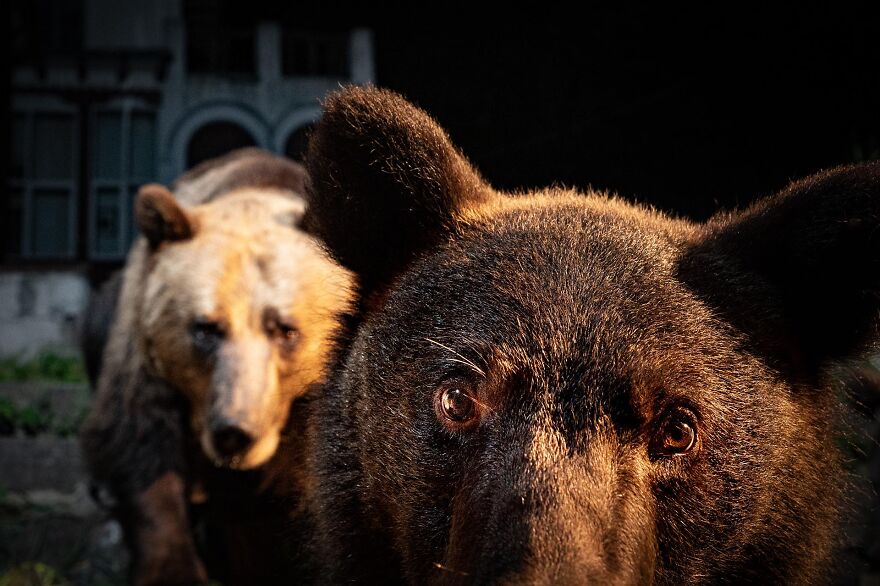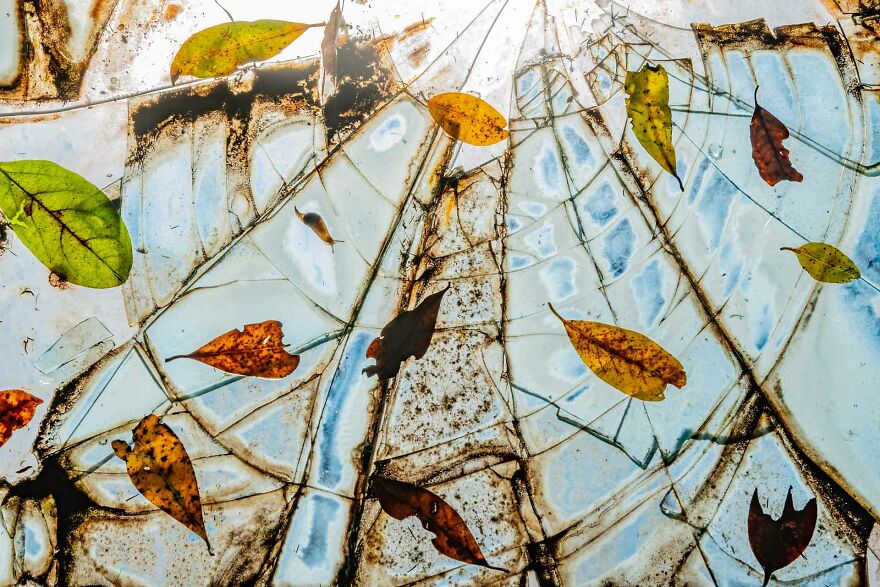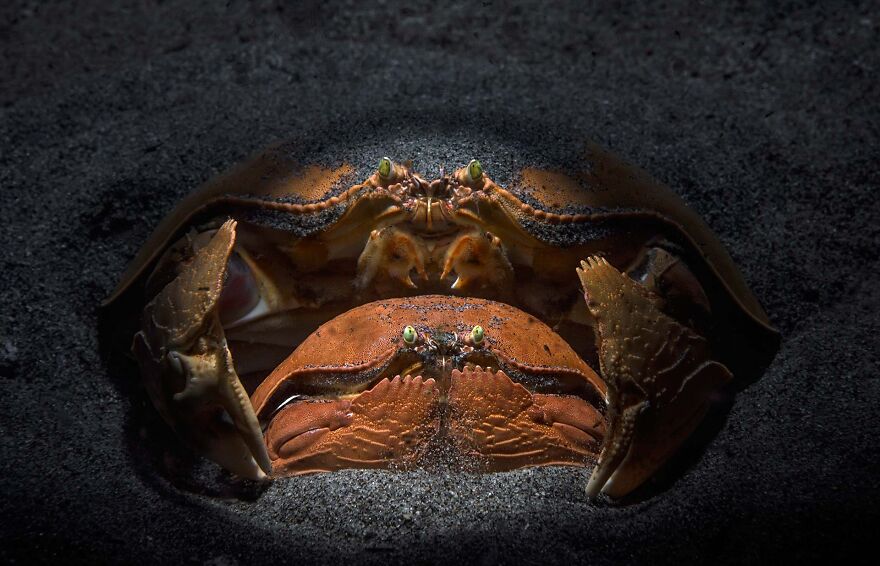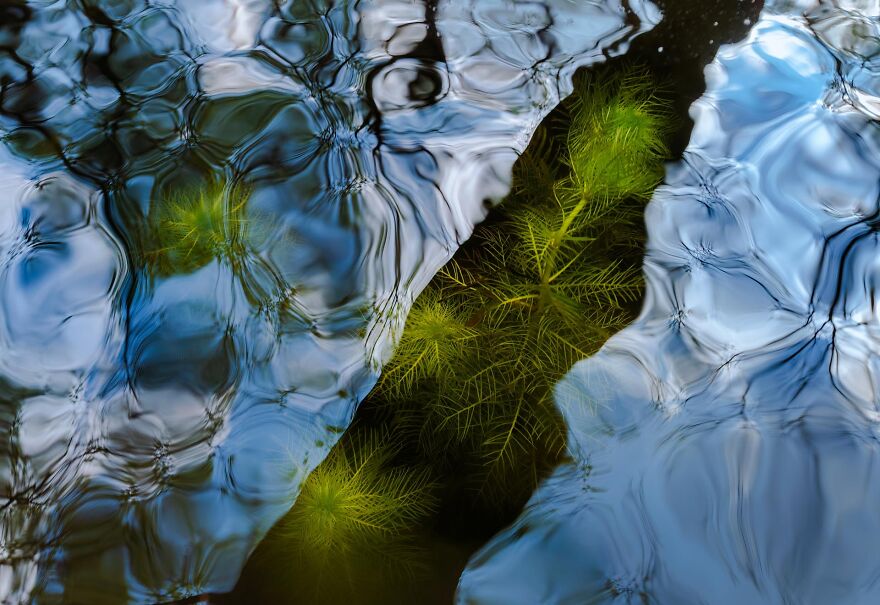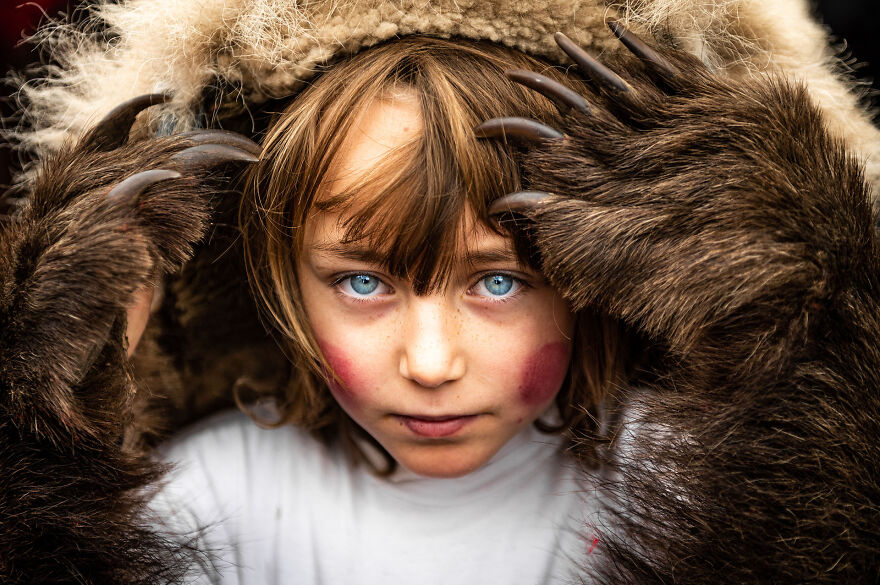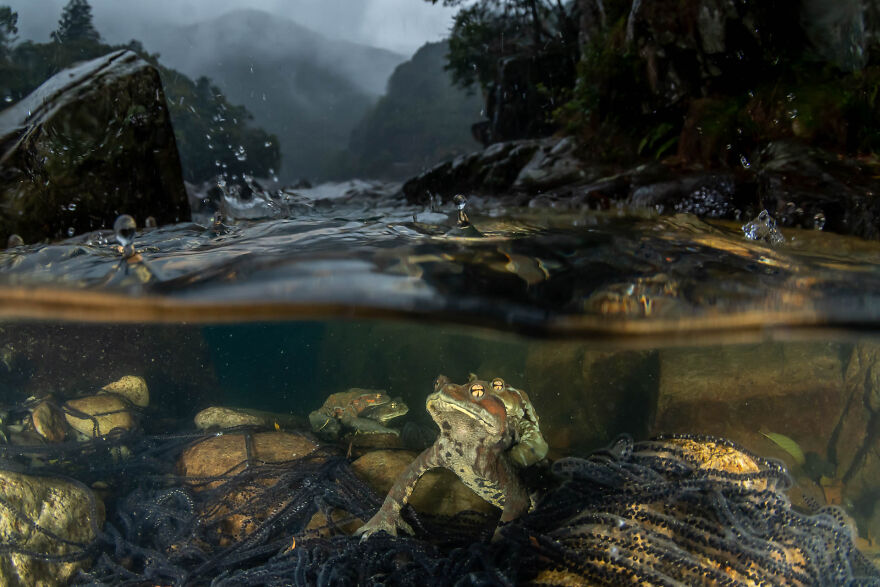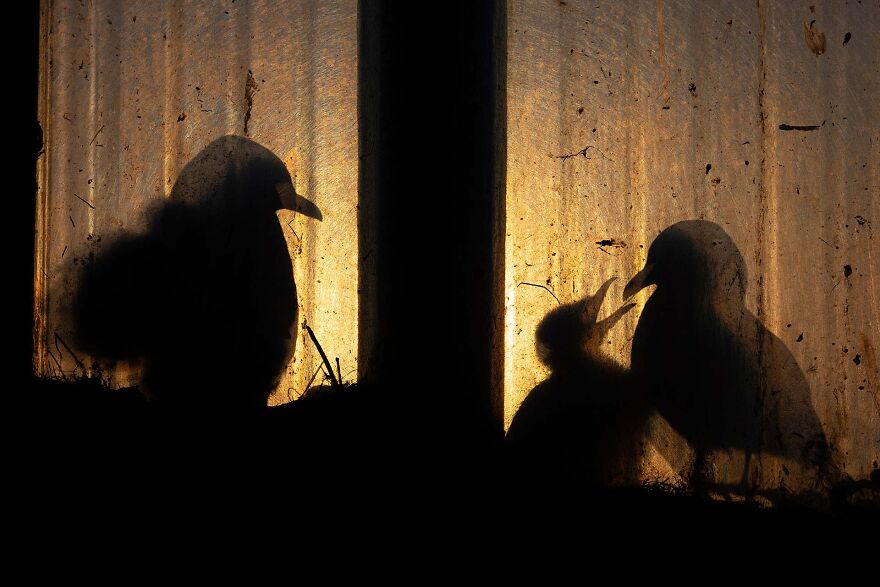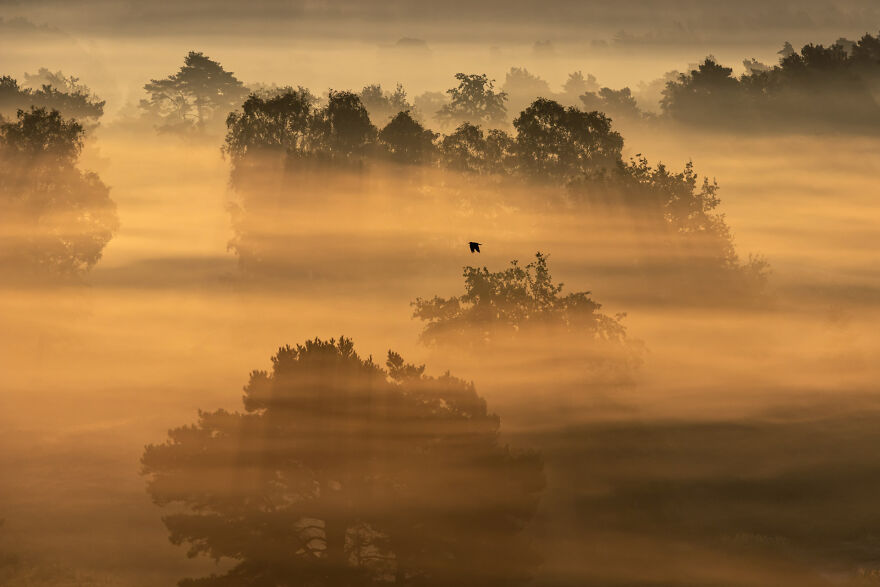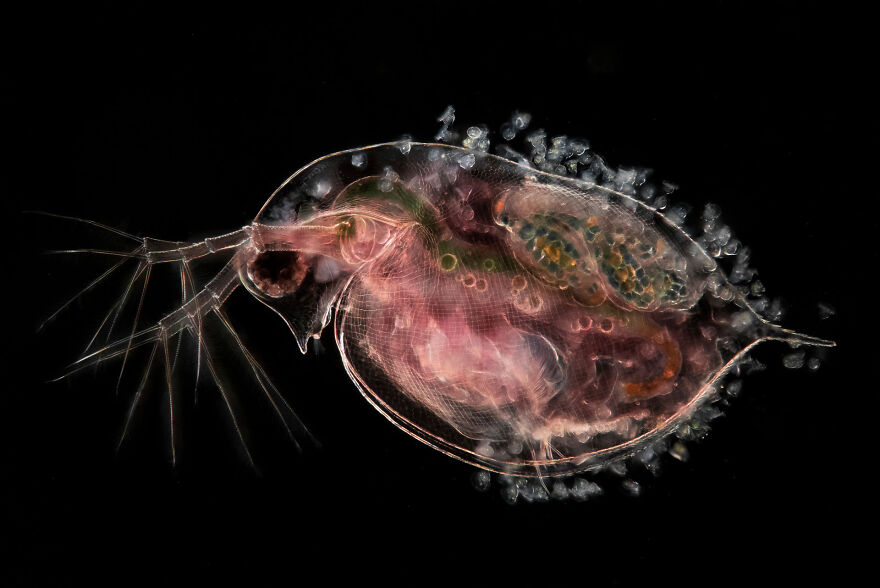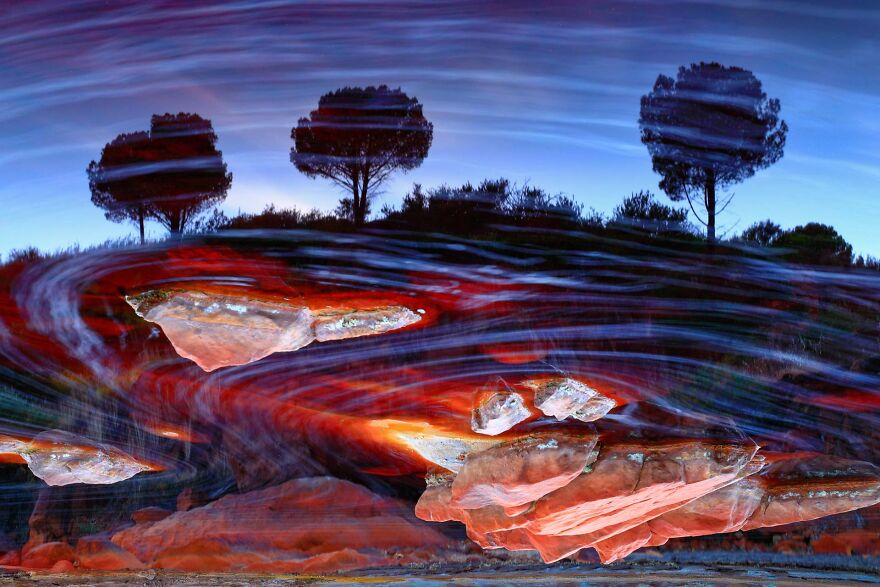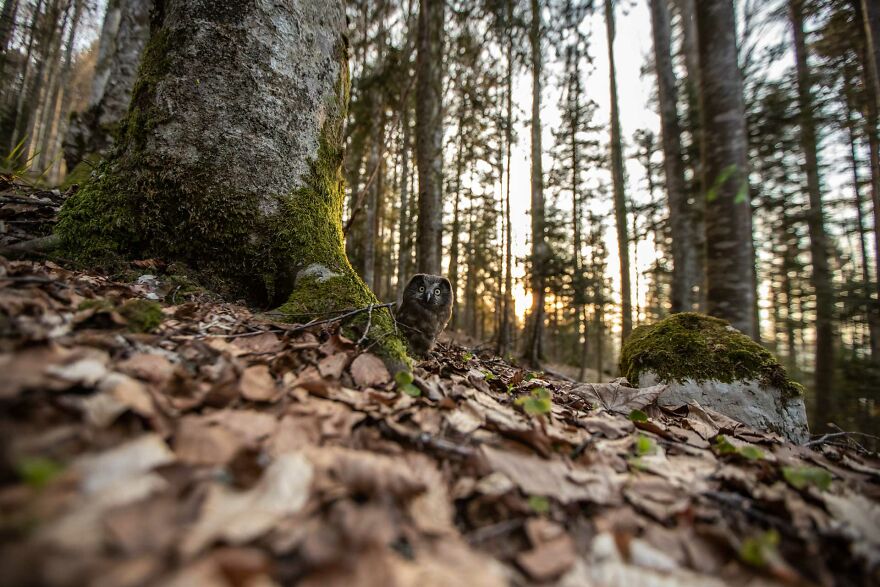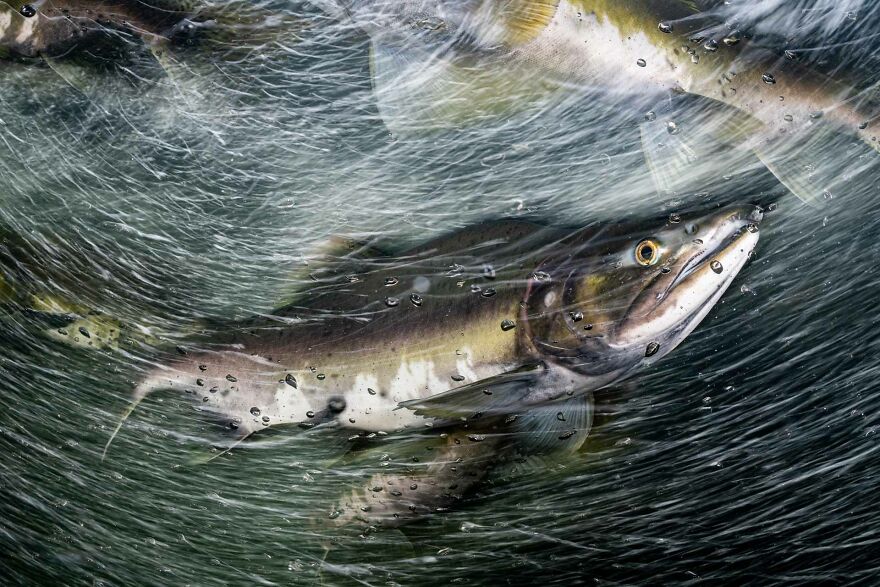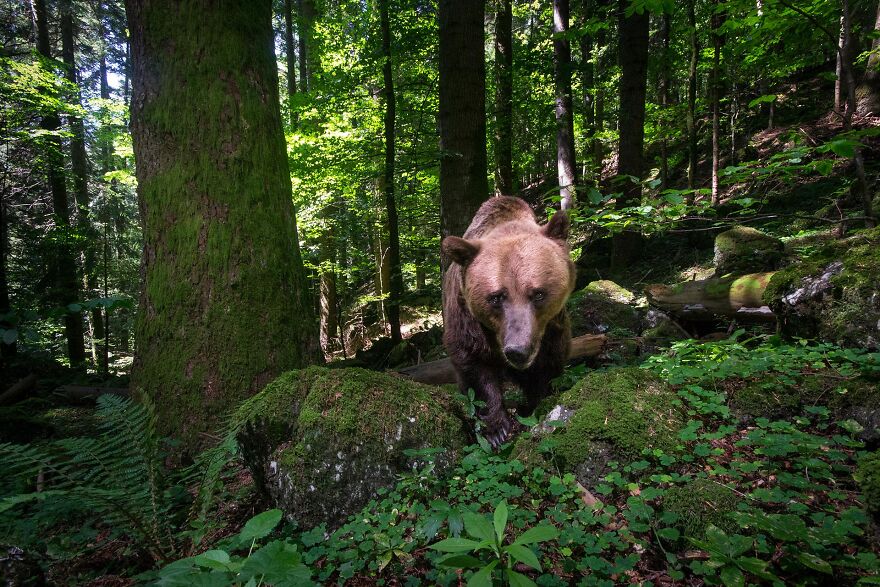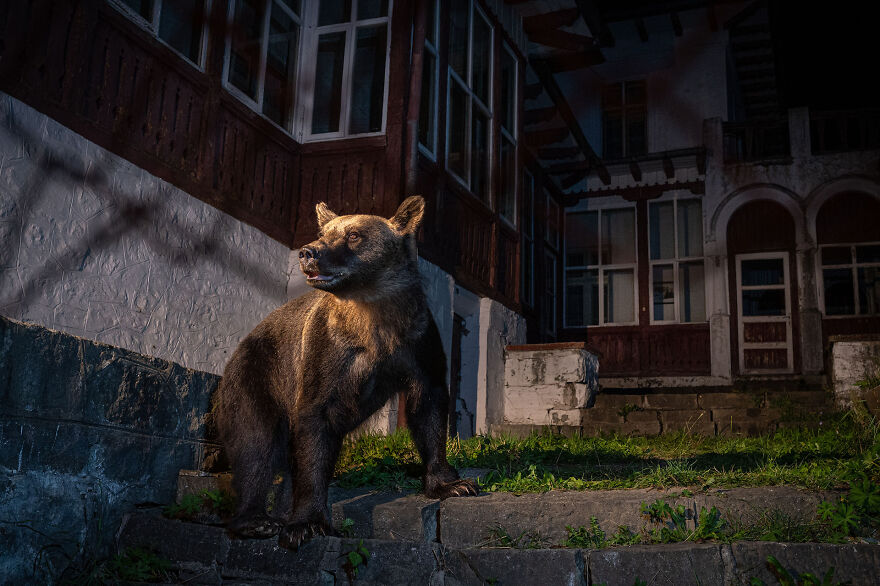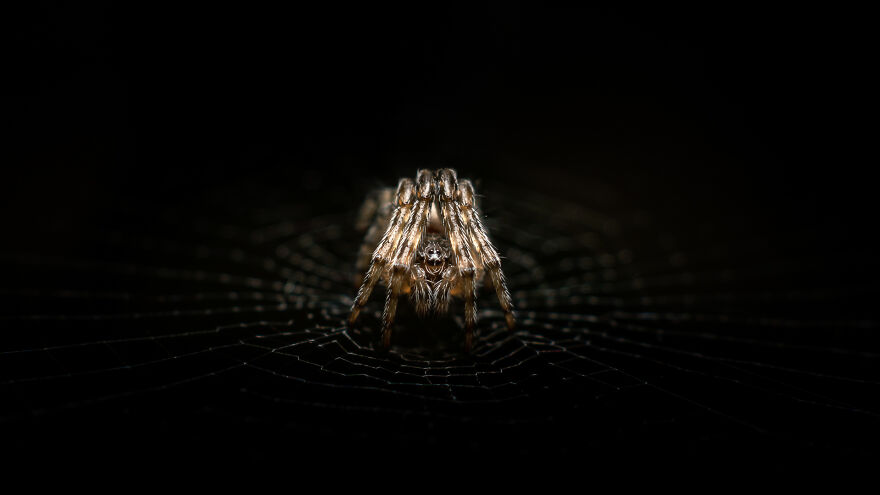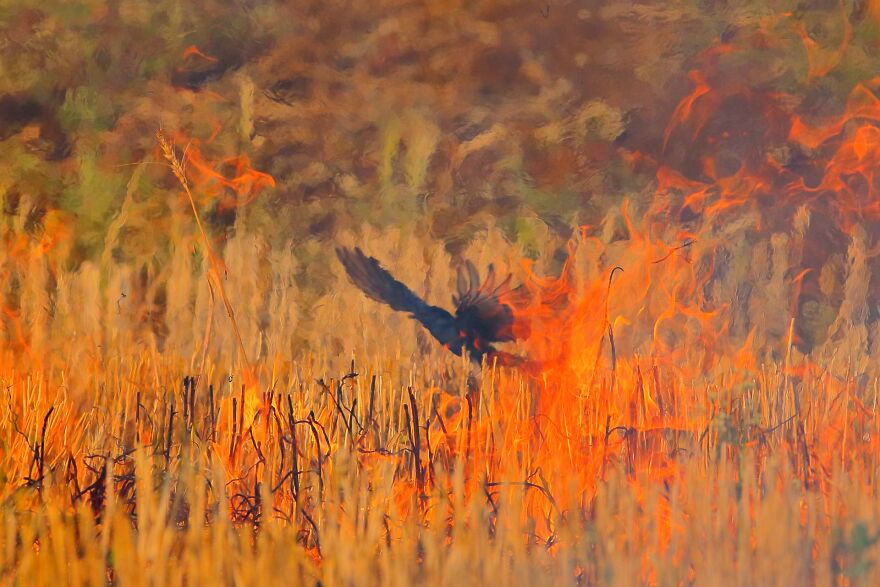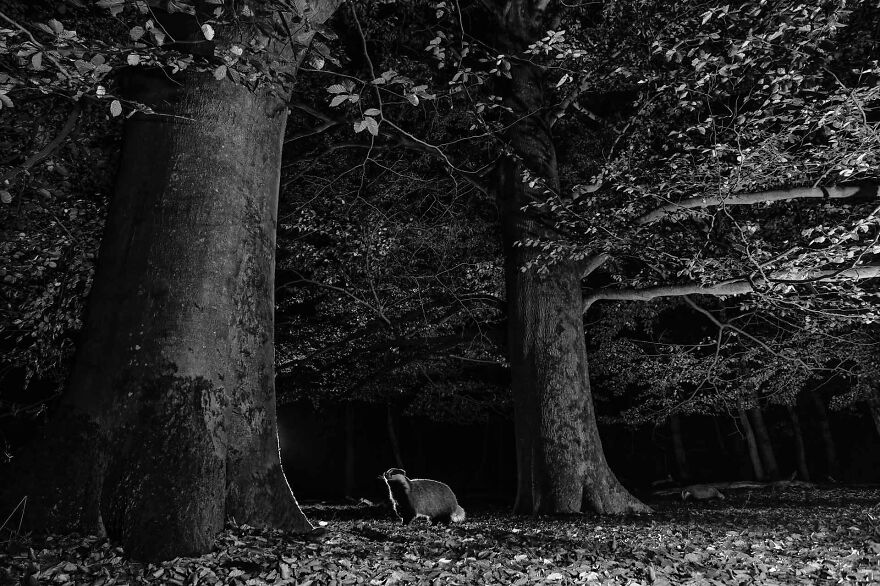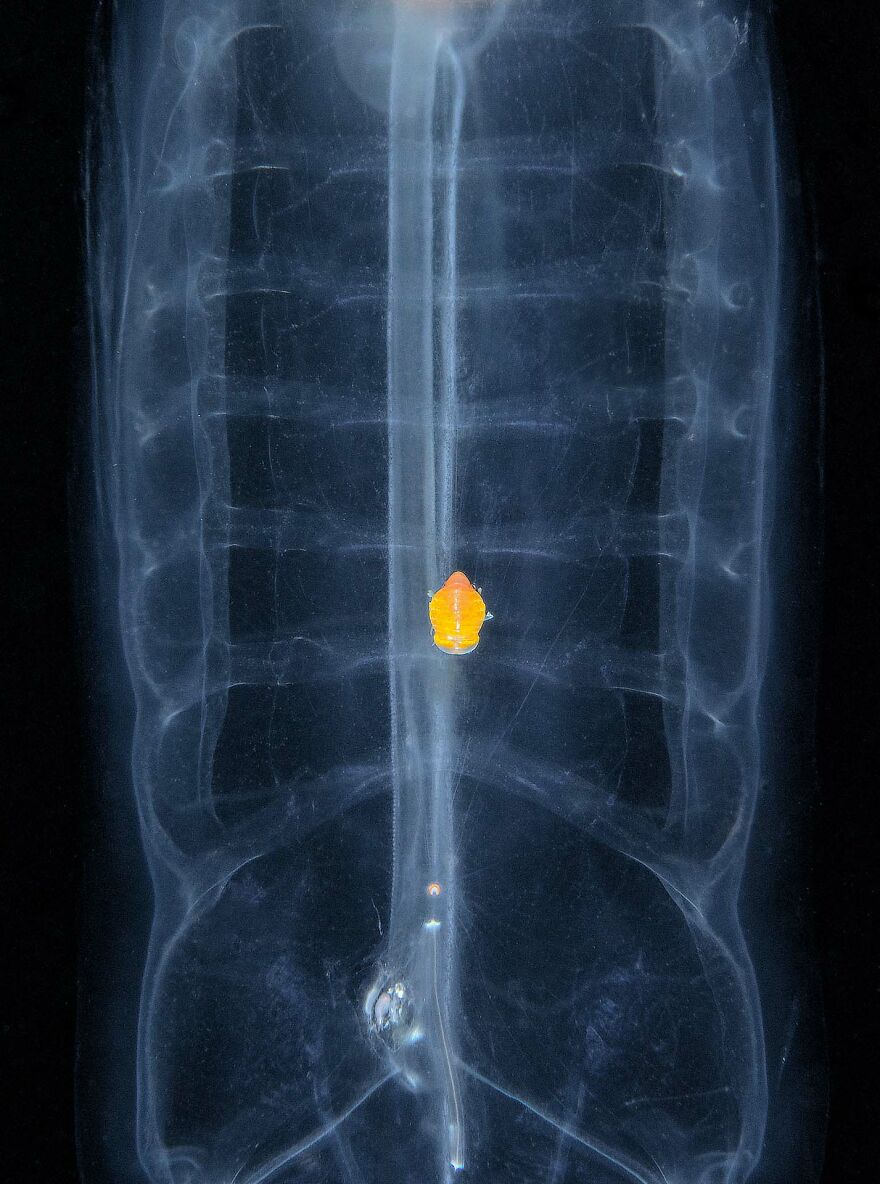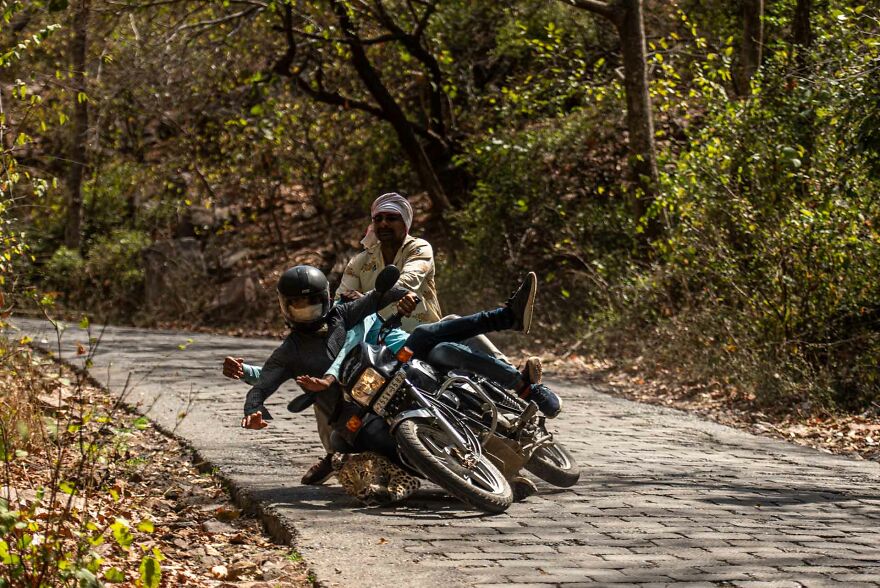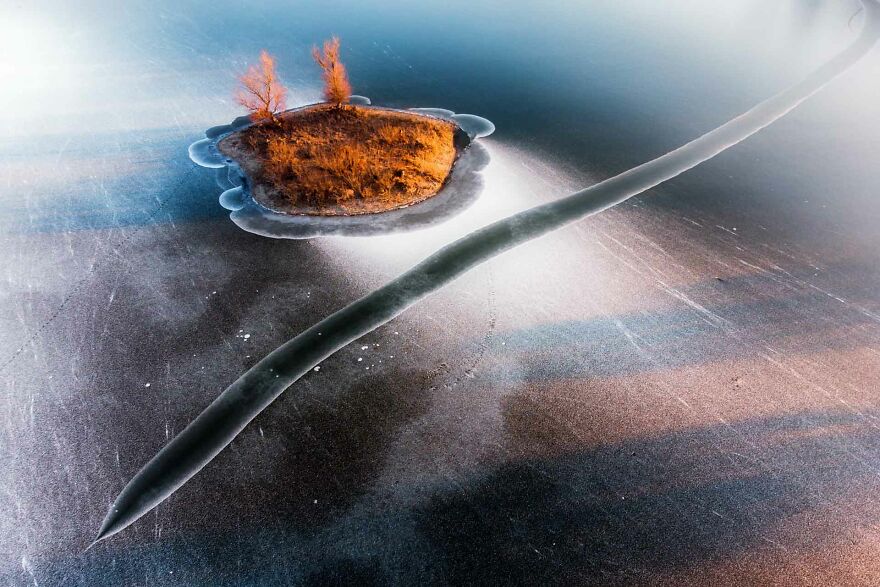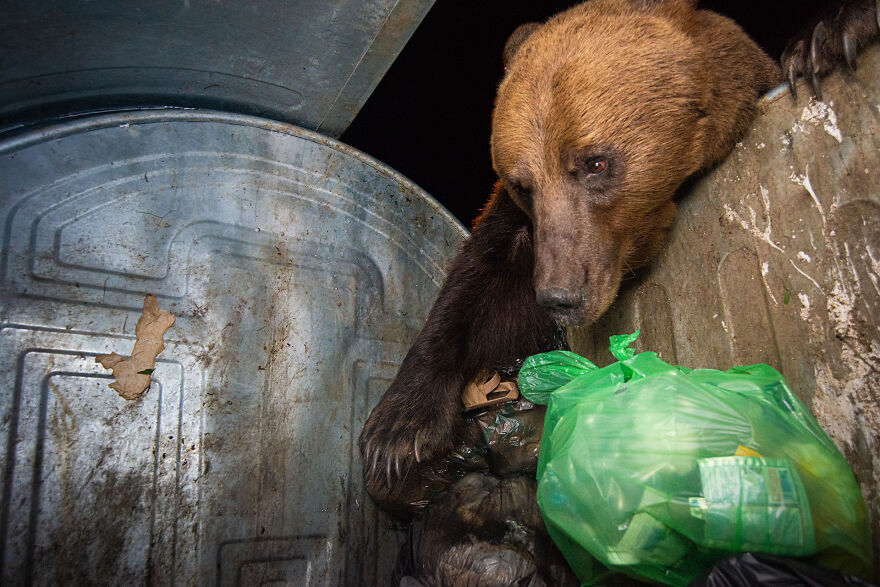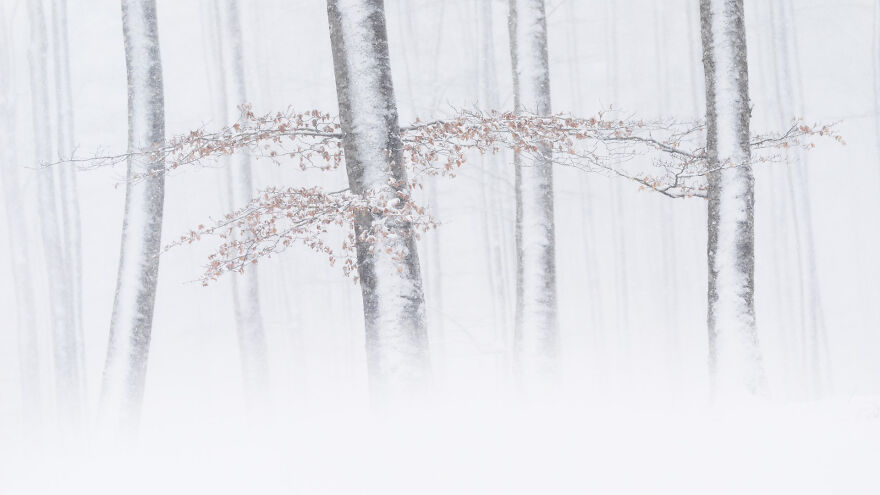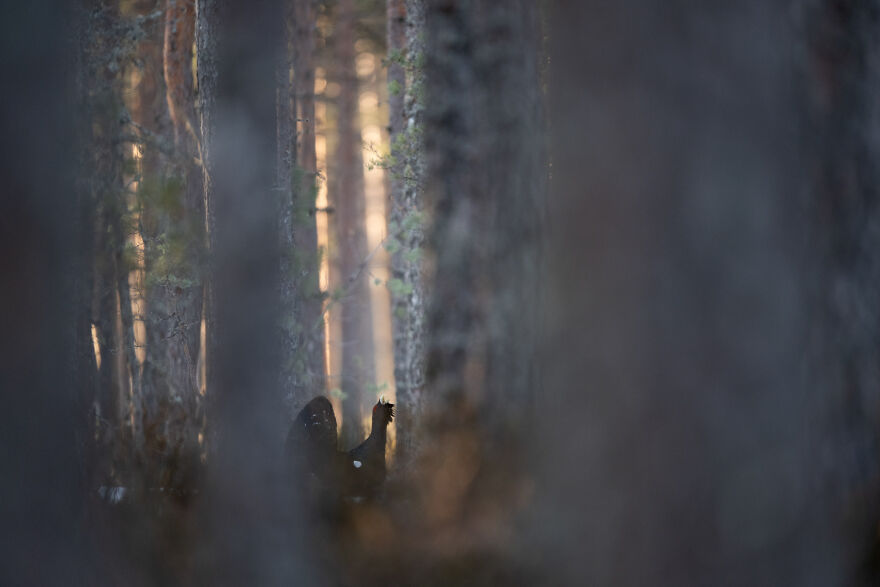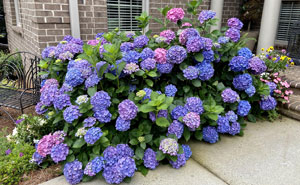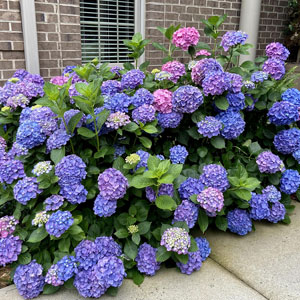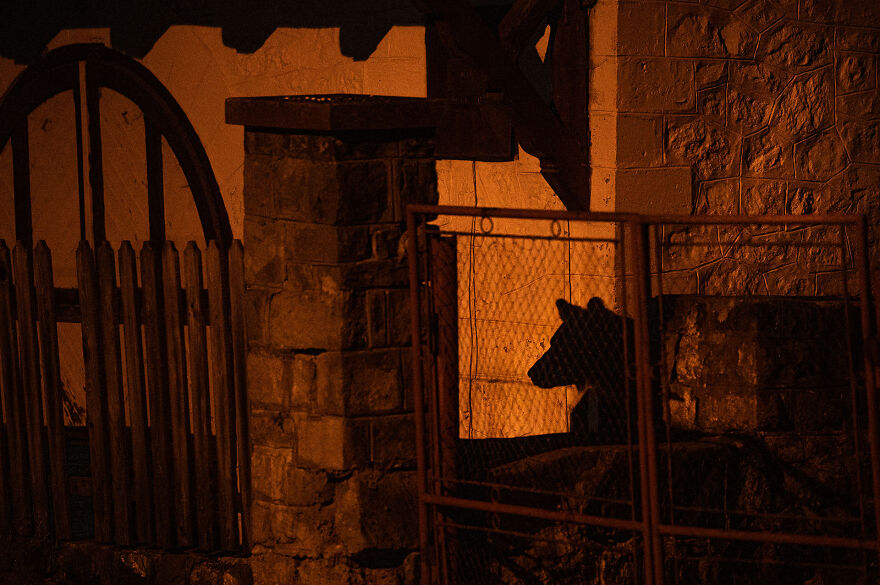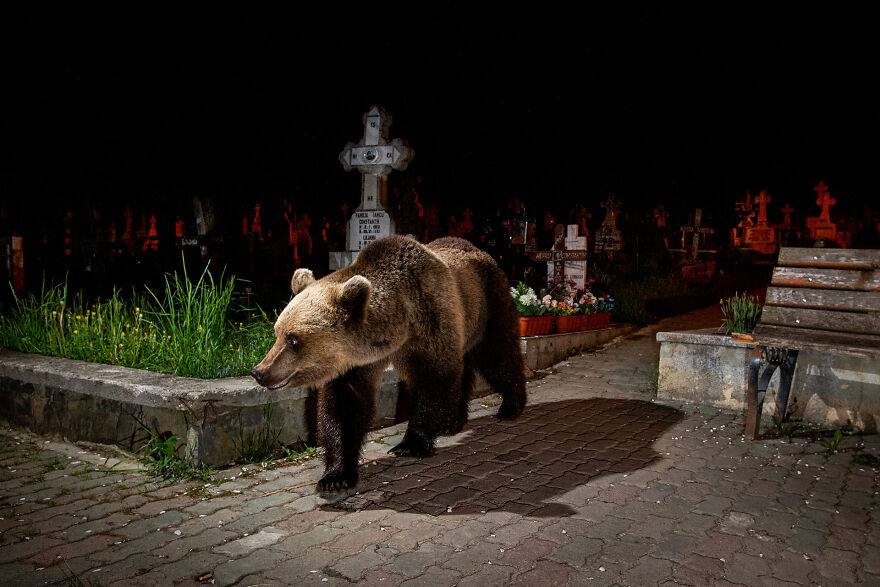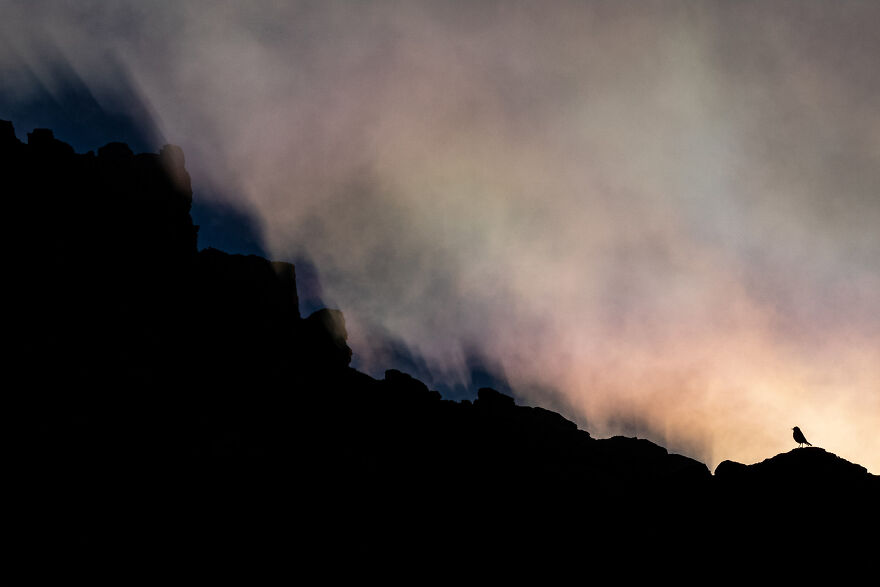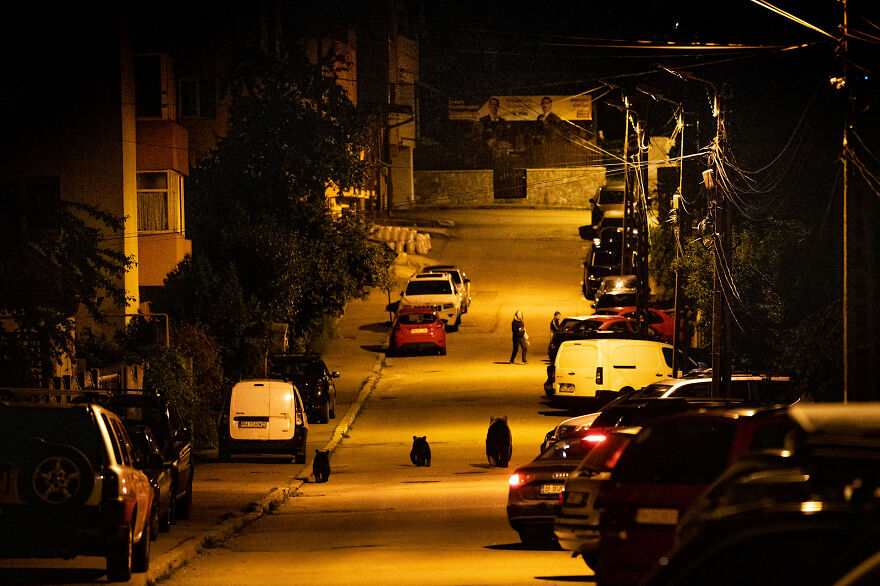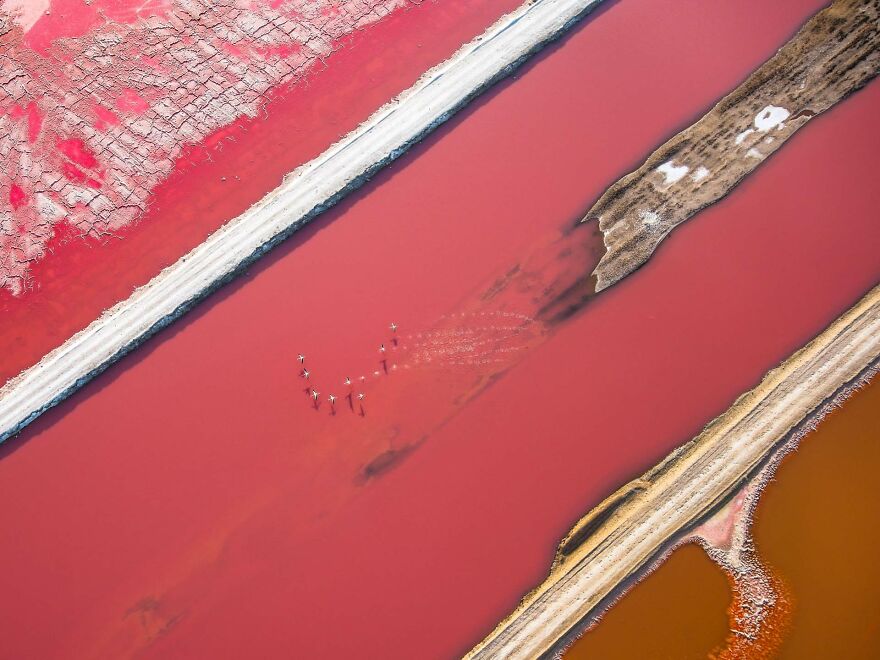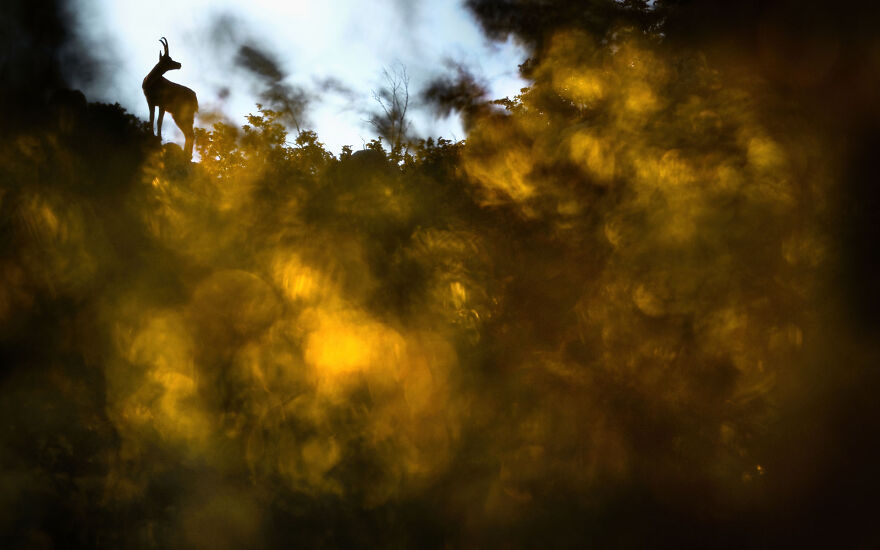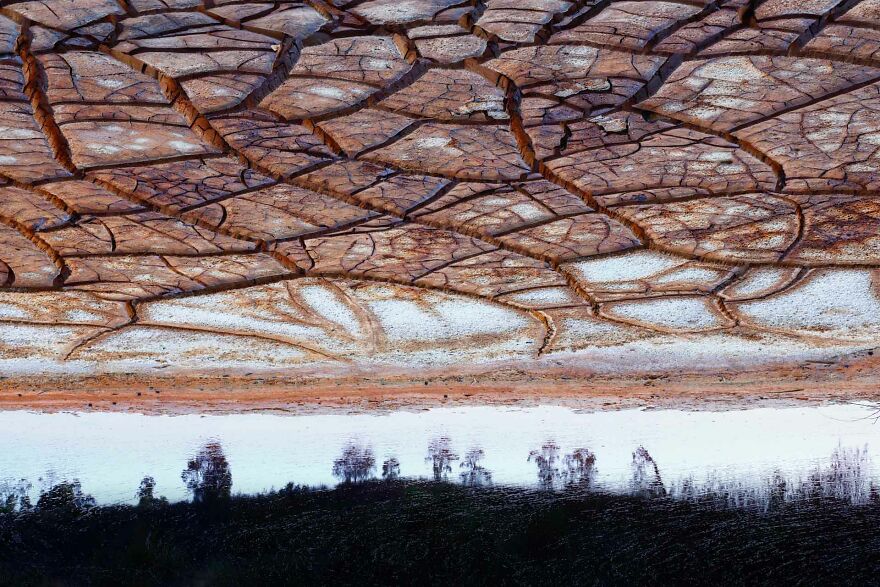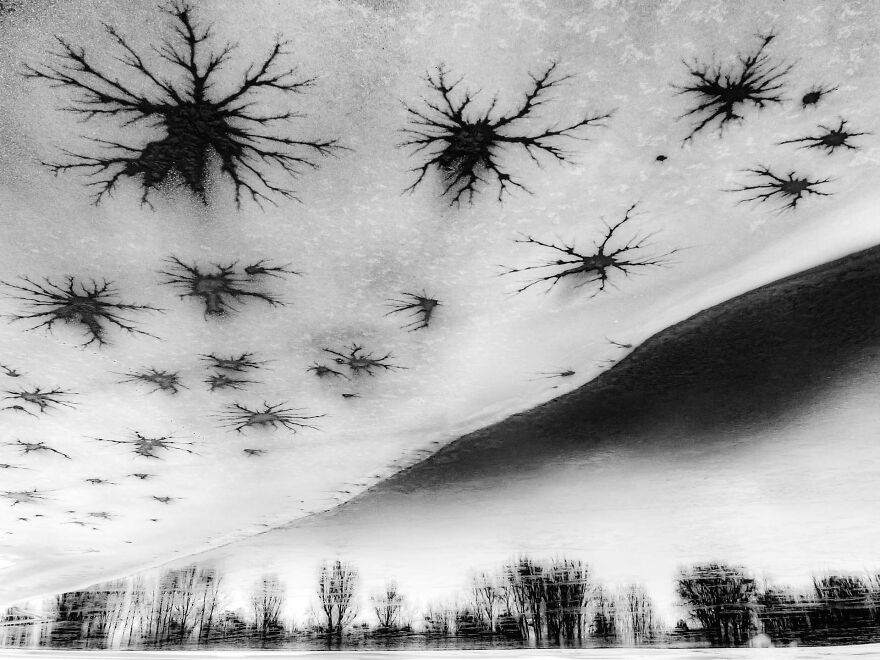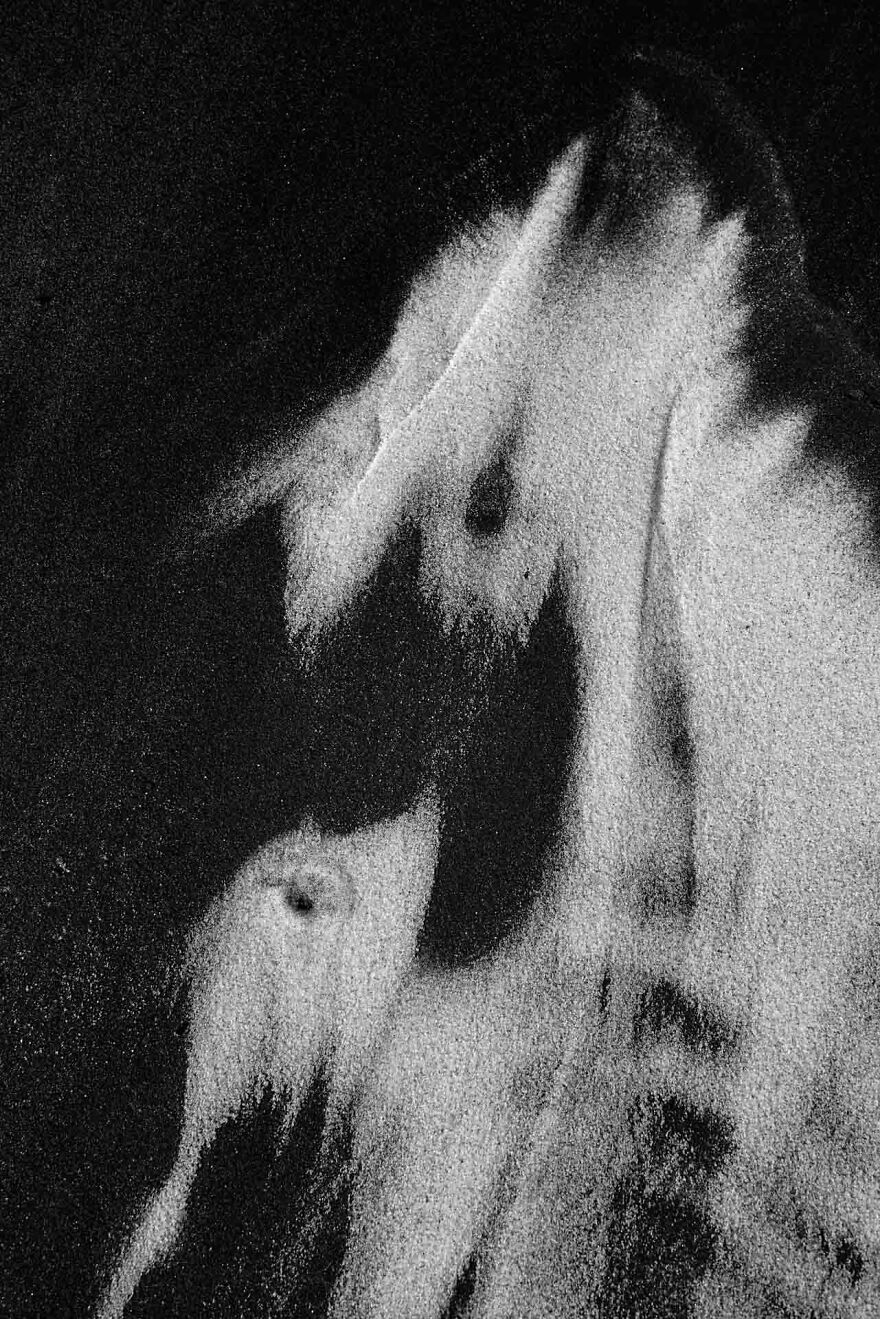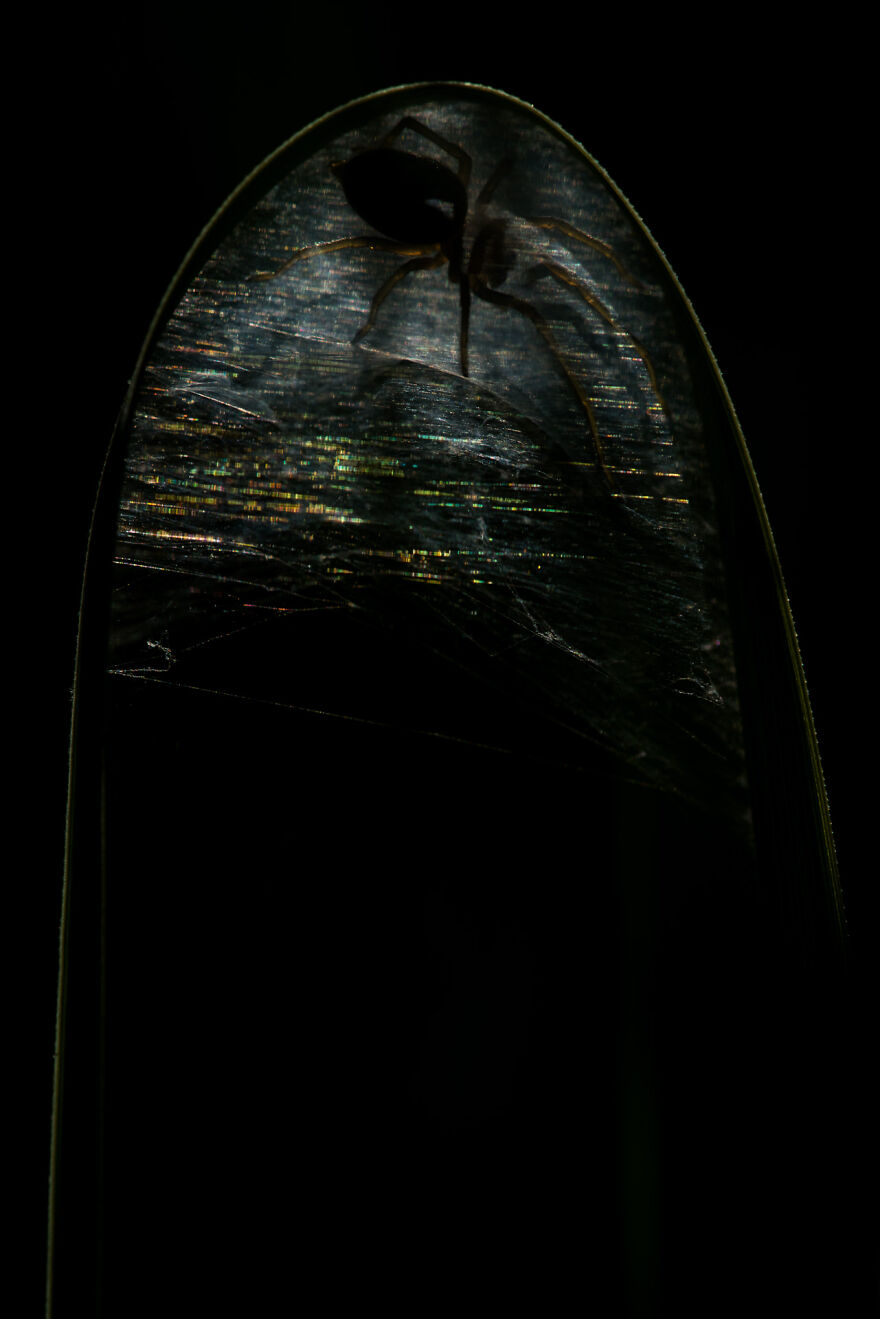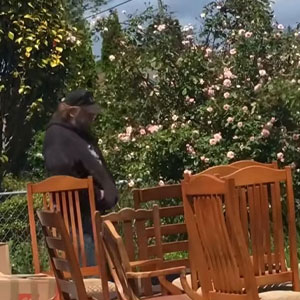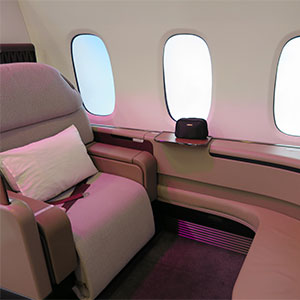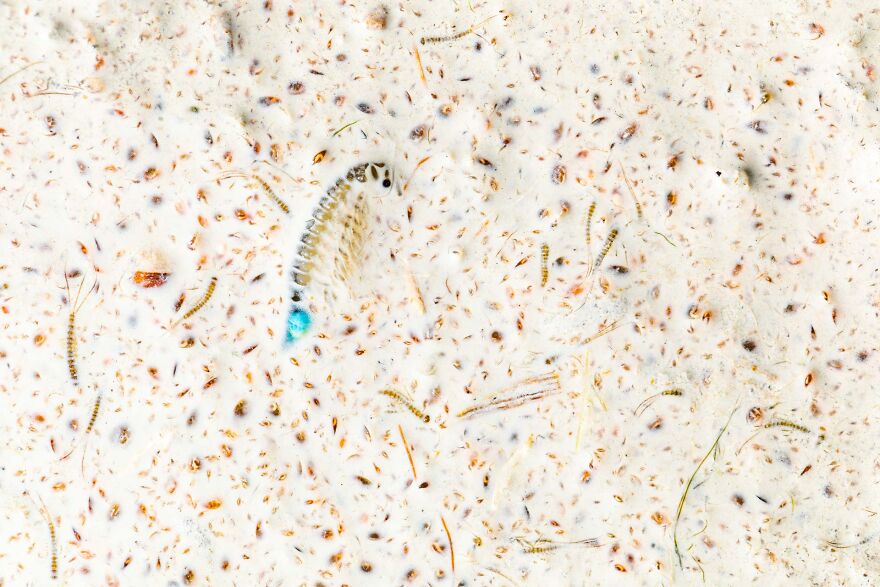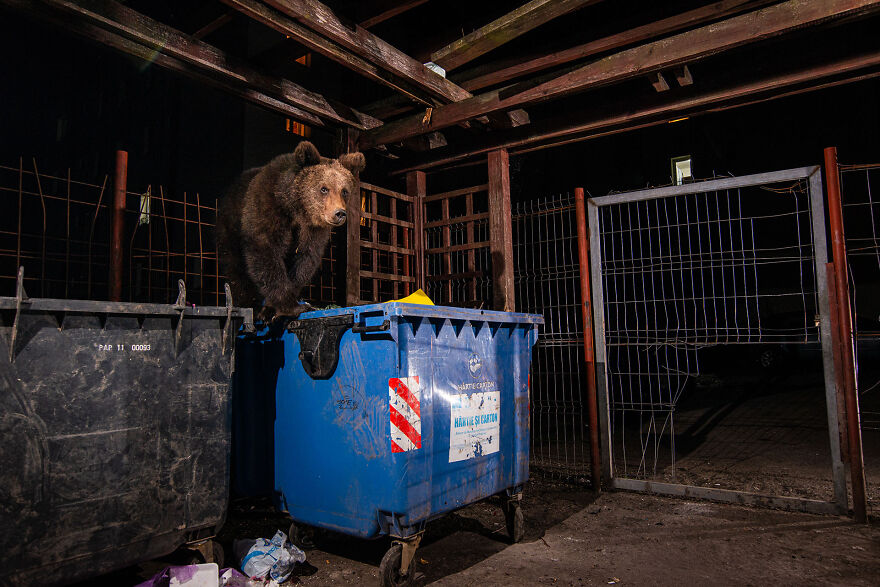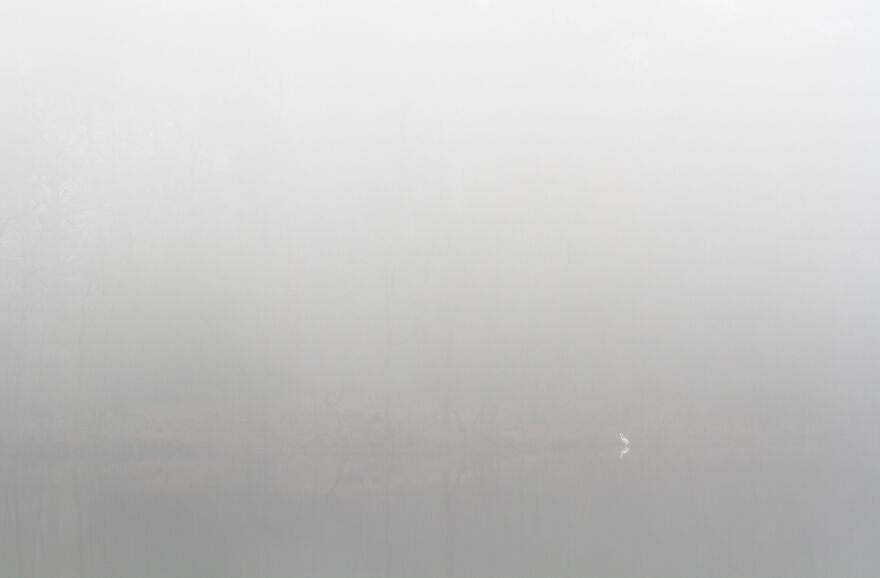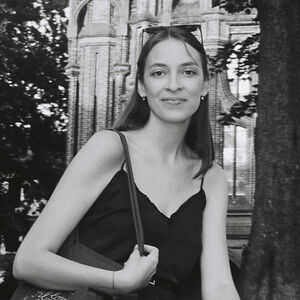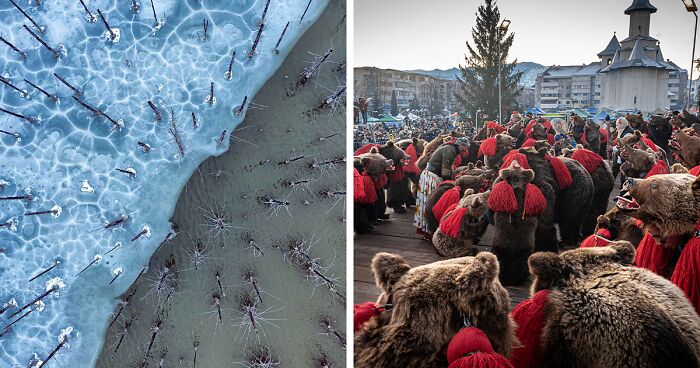
666Kviews
Here Are The 30 Winning Pictures Of The 2022 Nature Photographer Of The Year
InterviewCapturing nature's beauty is a task that will live on forever. Numerous breathtaking landscapes, animals, plants, and unique moments are what photographers seek when looking for the perfect shot.
In this year's Nature Photographer of the Year (NPOTY) contest, judges had to choose from 20,952 images coming from over 96 different countries, making that a new record for this competition. Photographers could enter into 12 different categories, such as Birds, Mammals, Landscape, Underwater, and more. Nature photographer Dmitry Kokh earned the title of “Nature Photographer of the Year 2022” by winning with his photo 'House of Bears'.
So we invite you to see what nature has been up to this year by taking a look at this year's winners, runners-up, and highly commended photos. Also, feel free to visit other posts on Bored Panda from competitions from 2021, 2020 and 2019.
More info: naturephotographeroftheyear.com | Instagram | Facebook
This post may include affiliate links.
Category Mammals: Winner, 'The World Is Mine' By Sascha Fonseca
"A strikingly beautiful Snow leopard roams across the jagged peaks of the Ladakh mountain range in India. Thick snow blankets the ground, but the big cat’s dense coat and furry footpads keep it warm. I captured this spectacular image during a three-year DSLR camera trap project in the high-altitude region of Ladakh in the Indian Himalayas bordering Pakistan and China. Challenges were many: The steep, rugged terrain with low oxygen levels, finding locations, getting the equipment up, and maintaining it over long periods of time. The mystery surrounding the Snow leopard always fascinated me. These rarely-sighted, wise-looking cats are since centuries the stuff of legends and fairytales. Their incredible stealth and camouflage and the remote environment they live in, probably make the ‘ghost of the mountains’ the most challenging big cat to photograph in the wild. Listed as Vulnerable on the IUCN-World Conservation Union’s Red List of Threatened Species researchers estimate that there are between 400 to 700 snow leopards in India today. Habitat loss, poaching, and retaliatory killings as a result of human-wildlife conflict are the biggest threats that these magnificent cats face. Snow leopard habitat range continues to decline from human settlement and increased use of grazing space."
"My imagery is to make people connect to wildlife and appreciate the often unseen natural world. I believe that greater understanding leads to deeper caring which hopefully results in active support and as a multiplier for conservation efforts."
Bored Panda got in touch with the overall winner of NPOTY 2022, Dmitry Kokh, to learn more about him and his experience in wildlife photography. The photographer shared that the past year has been a complete whirlwind - at times very challenging and at times insanely rewarding. "The title of NPOTY '22 is an incredible honor and it feels like quite a symbolic way to round off this rollercoaster year. It's the biggest reassurance and motivation to keep going, at a time when I needed it the most. I'm deeply grateful and hopefully can keep sharing the wilderness with you all!"
Category Animal Portraits: Winner, 'Summer Season' By Dmitry Kokh
"In September ’21 we went on a long-awaited trip to Chukotka and Wrangel Island. We sailed along the coast and covered more than 1200 miles of untouched landscapes, villages lost in time, spots with various fauna, and seas full of life. One day, bad weather was expected, so our captain approached a small island, Kolyuchin, to take shelter from the storm. Kolyuchin is known for the polar weather station that operated on it in Soviet times. Though the station was closed in 1992, the abandoned village still stands on the island. The stormy wind, rain, and neglected buildings on the rocky shores all made everything appear super surreal. Suddenly, we noticed movement in the windows of the houses. Someone took out some binoculars and we saw the heads of polar bears!"
"The fog, a place long deserted by people, and polar bears was the perfect setting. Bears are very curious by nature so they walked around houses, and checked every door, window, nook, and cranny. There were about 20 animals inside at the same time, mostly males. The females kept to the side with their cubs, closer to the shores of the island. The bears may look calm and sweet in these photos, but one must not forget that they are smart and incredibly powerful animals! As they probably thought the drone was some sort of bird, they did not let it out of their sight. Never one to miss a meal, they were probably ready to strike at any moment, even when seemingly chilling out on the grass!"
"I shot from a drone equipped with low-noise propellers to not disturb them. I was very careful and very patient, and let the bears slowly get used to the drone so that eventually I was able to get closer and closer. Bears are very curious and were probably intrigued by this ‘”weird-looking bird”, which was amazing for me as they looked right into the camera. I think that these images of the polar bears on Kolyuchin island are very timely, they are like snapshots of a premonition reflecting what could be in our not-so-distant future. The world as we know it is very fragile, and the current state of the world – from political conflicts and nuclear tension to the climate crisis – means that the end could very well be nigh. These things are real, and if they continue as they are, the outcome will be catastrophic."
the bear is so cute i want to pet it but i think would not be good for my health
Category Landscapes: Highly Commended, 'Lightning Up The Grand Canyon' By Raul Mostoslavsky
"I traveled last year to Utah to accompany my wife to run a marathon. Although we went only for 3 days, I checked the map and realized that driving for 6 hours will bring me to the Grand Canyon, so we drove there (we were lucky to find last-minute lodging inside the Park, due to Covid). We arrived to watch a beautiful sunset, and then, exhausted, headed to bed. But I knew this was probably the only night I would spend in the Grand Canyon in my life, so I decided to head to the rim; I always dreamed of taking a night shot of the Canyon with a starry night. I arrived just when a storm was forming (no starry photo!), with a lot of lightning inside the clouds. I started playing with the camera when suddenly a bolt struck right in front of me, so I started trying to find the right settings. It was dark-pitched! After 5 different settings, and 300 shots, I got only 2 that worked. 30 minutes later the storm was gone. Being at the right time at the right moment."
We got curious about how Dmitry's journey as a photographer began. The artist shared that his experience with wildlife photography only started about 5 years ago when he picked up a camera to capture some underwater shots. "I had been diving for some time, so wanting to capture this whole other world was quite a natural progression. However, my 'day job' is very different - I founded an IT (software) company, so my day-to-day life is often quite mundane, meaning going out on photography trips never gets old!"
Category Animal Portraits: Highly Commended, 'Iberian Lynx Family Portrait' By Alessandro Beconi
"I started looking for the Iberian lynx a few years ago. I had been lucky and I had photographed a lynx with its big cub, even it was from a long distance. I have returned several times to Andalucia. I wanted to photograph this fascinating and highly endangered species. After a week of unlucky searches, on the last day, I spotted a lynx very far away. I waited but it seems to move to different locations each time. In the end, I understand what happened: the one I’m following from afar is not just one lynx but 4! Mother Lynx and her 3 cubs have already grown up. I’m lucky enough to see them approach and then disappear behind a hill. They are camouflaged with the surrounding environment and being able to see them is complicated. Suddenly two cubs climb a rock and crouch next to their mother. Then the third one also arrives, he sits on the rock and starts to lick himself. I can not believe my eyes. They are not far from me, but not scared either. They look at me, I look at them: incredible. A family picture that I never imagined so perfect. The light was great, but it was already getting dark. I took several photos with a very slow shutter speed, handheld, hoping for a photo without problems of sharpness. Luckily the stabilizer helped me."
Category Black And White: Highly Commended, 'Like A Fun' By Irma Szabó
"One of my favorite photo subjects is backlight photography. I especially like to photograph birds in backlight, because it is wonderful how the light shines through the bird’s wings or creates a beautiful contour. That’s why when I go into the hide, I always try to position myself so that the sunrise or sunset is facing me. I took the picture from a hide where we can be photographed birds without disturbing them. The birds are dressed in beautiful wedding clothes, in springtime. More precisely, I took the picture at the beginning of May, in the early morning hours, in Kiskunság in the south of Hungary, where there are a lot of birds since fortunately there is quite a lot of untouched uninhabited land. The image is the result of a lucky moment As the bird is about to take off, it begins to spread its wings nicely. Thanks to the backlight, the sun shines through the wings and the shadows of the bird’s neck and head can be nicely outlined. In the spring, I really loved photographing the great egrets in their beautiful wedding dress, it is one of the most majestic birds I have ever seen."
If you're a long-time reader of Bored Panda and a photography enthusiast, you might've seen some of Dmitry's photographs since there were quite a few articles showcasing his work. In one of them, the photographer himself shared his story about traveling to lake Baikal to photograph seals underwater. We asked Dmitry about how underwater photography is different from on-land photography. As mentioned before, the photographer is a diver first and foremost, so underwater photography comes quite naturally to him, "but even then there are still many challenges - from technical difficulties of working in water, to visibility and interacting with animals in the most mindful, safe and responsible way. But for me it's all worth it - capturing large marine animals is what brings me the biggest joy!"
Category Black And White: Winner, 'Otter In Ice Hole' By Ernst Dirksen
"If there’s one animal that strongly depends on clear water with a lot of fish, it’s the otter. After the water quality in the Netherlands improved drastically, people started a program to reintroduce the otter in 2002. The otter in this picture is one of the animals that were part of this successful project. The end result of the program is a healthy population of otters in the Netherlands. In winter, when the water is covered with ice, it pays off to keep an eye on the holes in the ice. The otter uses these holes to access the water and hunt for fish. By making swimming motions, the otter makes sure the ice hole does not freeze. In a wildlife park nearby Lelystad, I got permission from the forester to observe such an ice hole and take pictures there. After many hours of observation, I knew how the animal behaves and came up with a plan. I placed my camera right above the ice hole and used a 12-24 mm zoom lens. I camouflaged the setup with a camouflage net. At a safe distance from the ice hole, I keep an eye on the hole and operate my camera remotely. After waiting for many hours, the otter finally appears and looks at my camera setup in surprise. Mission accomplished!"
You must have been frozen! But the final image is worth it! All the bubbles, in the ice and in the water, and even the round shape of the hole, emphasize the otter!
Category Animal Portraits: Highly Commended, 'Mesmerizing Cross Fox' By Zita Quentin
"I captured this image of a cross fox handheld from a rocking boat in a remote area on Kodiak Island, Alaska. Red foxes are native to Kodiak Island and the Kodiak red fox belongs to a separate subspecies, Vulpes vulpes harrimani. There are three common color variations of them: red, silver/black, and cross, the latter with a black/brown cross on the back and shoulders. In the mornings, we went out on the boat towards the ocean to look for whales and some animals on the shore. We photographed bald eagles, black-tailed deer, and red foxes along the way. All of a sudden, we spotted a cross fox on some huge, beautiful black rock formations further away from the beach. We approached the fox slowly so that we don’t disturb him or scare him away. Luckily, he stayed on the seaweed-covered rocks and I could take some shots while he was sitting in a great spot and he even looked straight into my camera for a brief moment. Looking at the scene with this beautiful cross fox in the perfect landscape made me feel like I was looking at a painting. In Alaska, foxes prefer to eat voles but they also hunt for squirrels, rabbits, or other small mammals. This cross fox was down at the beach digging for worms, fish, or sea urchins during the low tide which is normal behavior for the Kodiak foxes, especially in the morning or evening."
ah! these are my favorite kind of fox breed!! saving this for my camera roll :D
The winning photograph "House of Bears" depicts a kind of surreal scene of polar bears hanging out in an abandoned house. Observing this in real life must have been pretty exciting. Dmitry shared that it was one of the most thrilling moments of his life! "You don't really have time to rationalize or analyze or ponder - 'why?'. You're just in the moment - in awe, in excitement, but also focused on trying to capture it all and not mess up.
These images have become the biggest photos of my career thus far, and this may be the best anecdote about polar bears I’ll have for the rest of my life! I was incredibly lucky to have that kind of unique encounter and I'm very grateful that these images have resonated with the world," the photographer added.
Category Mammals: Highly Commended, 'High Jump' By Zsolt Moldovan
"I’m working as a farmer, and luckily nature is my office. In the afternoons, after finishing my work, I spent a lot of time nearby Cernat village, taking pictures of bee-eaters and foxes. In my imagination, I have already taken several pictures, mostly of bee-eaters, as my main goal was to capture the life of our colorful little birds. Unfortunately, I didn’t manage to capture anything for a long time, but finally, my patience paid off. I set up my hide on a field next to the loess wall (where the bee-eater’s nest was), and I also managed to have a good view of the red fox family’s life. I could say it was a coincidence, but I don’t believe in coincidences. That’s the reason why the autofocus of the camera was on the fox, my finger on the shutter button, and my eye on the camera viewfinder before the jump. The scab beetle migration is a natural phenomenon that can be seen every four years in our country. I managed to catch a moment I have never seen before. The little fox showed me interesting and special behavior. That was an amazing day."
i love foxes- i knew there would be at least one picture of a fox, and this did not disappoint ❤️🦊
Category Human And Nature: Winner, 'House Of Bears' By Dmitry Kokh
"In September ’21 we went on a long-awaited trip to Chukotka and Wrangel Island. We sailed along the coast and covered more than 1200 miles of untouched landscapes, villages lost in time, spots with various fauna, and seas full of life. One day, bad weather was expected, so our captain approached a small island, Kolyuchin, to take shelter from the storm. Kolyuchin is known for the polar weather station that operated on it in Soviet times. Though the station was closed in 1992, the abandoned village still stands on the island. The stormy wind, rain, and neglected buildings on the rocky shores all made everything appear super surreal. Suddenly, we noticed movement in the windows of the houses. Someone took out some binoculars and we saw the heads of polar bears!"
"The fog, a place long deserted by people, and polar bears was the perfect setting. Bears are very curious by nature so they walked around houses, and checked every door, window, nook, and cranny. There were about 20 animals inside at the same time, mostly males. The females kept to the side with their cubs, closer to the shores of the island. The bears may look calm and sweet in these photos, but one must not forget that they are smart and incredibly powerful animals! As they probably thought the drone was some sort of bird, they did not let it out of their sight. Never one to miss a meal, they were probably ready to strike at any moment, even when seemingly chilling out on the grass!"
"I shot from a drone equipped with low-noise propellers to not disturb them. I was very careful and very patient, and let the bears slowly get used to the drone so that eventually I was able to get closer and closer. Bears are very curious and were probably intrigued by this ‘”weird-looking bird”, which was amazing for me as they looked right into the camera. I think that these images of the polar bears on Kolyuchin island are very timely, they are like snapshots of a premonition reflecting what could be in our not-so-distant future. The world as we know it is very fragile, and the current state of the world – from political conflicts and nuclear tension to the climate crisis – means that the end could very well be nigh. These things are real, and if they continue as they are, the outcome will be catastrophic."
The bear on the porch looks sad that there were no humans to munch on in the house.
As for his future plans, Dmitry is going to do some dives in Indonesia in January'23 and on a photo tour to Cape Town, South Africa in February - so all interested can read more about it here!
Category Animals Of 'De Lage Landen': Winner, 'Coot' By Franka Slothouber
"I captured this photo in November 2021 at the end of a photo session in the Amsterdamse Bos (the forest of Amsterdam) that was all about autumn trees. When I was satisfied with the results of that session I started to walk back to my car. But before I reached the parking lot I crossed a small bridge overlooking a pond covered with beautifully colored beech leaves that had fallen off the trees. A coot was swimming towards me, hoping for me to throw some bread in the water. I didn’t have any bread with me, but I noticed the coot left a nice ‘smokey’ swimming trail behind. By turning my circular polarizing filter the water almost turned black, creating a beautiful contrast and making the colors of the beech leaves stand out."
Category Underwater: Runner-Up, 'Blue Cave Crab' By Martin Broen
"In the last couple of years, I have been fortunate to photograph over 200 different cenotes of the Riviera Maya in Mexico, capturing their surreal environments and the unexpected diversity of its caves. Looking for unique photographic opportunities of light and textures in the transition area between cave and cenote or light and darkness. During a traverse cave dive connecting seven different cenotes, we passed by this strange figure of a blue cave crab standing on a rock while fishing in the cave current, perfectly define against the background. This menacing silhouette looked like a Samurai with shiny blue armor, perfectly centered by the natural vignetting offered by the light fall-off of the cave, standing against the mangrove texture and green light of the sun passing through the tannic acid present on the surface. I got as close as possible to the subject to make him the hero of the scene and balance the elements of a perfect representation of the mangrove ecosystem."
Category Landscapes: Runner Up, 'Resilient Tree' By Gianluca Gianferrari
"These coves are a geomorphological phenomenon of soil erosion that is produced by the effect of rainwater on degraded clay rocks, with poor plant cover and therefore poorly protected from ruscellaning: producing deep furrows in the ground along the side of a mountain or a hill. That location is near the Canossa Castle. It is famous precisely for the castle where the humiliation inflicted by the Pope and Matilda of Canossa to the emperor Henry IV took place, in 1077bc… In that area, the mists are particularly interesting and I have tried for 6/7 years for the optimal condition to take this image that I had in mind. I went back 30/40 times over the year and I finally found the perfect conditions. This tree rises precisely on a thin blade of unstable rock, in precarious balance, like the Nature of our planet…"
Category Black And White: Highly Commended, 'Impala Shower' By Byron Grobler
"The Southern part of Kruger National Park is known for its high density and diversity of wildlife. This week, the main objective was to find and photograph leopards. High temperatures were making this difficult as most predators were inactive during the day. On this uncomfortably hot afternoon, my colleague and I decided to slowly drive the less traveled routes and hope for the best. Temperatures were well into the 40s (degrees Celsius) with a heavy downpour imminent. As the heavy shower of rain broke through, we could hardly see a thing and waited it out near a large herd of Impala. A few of the males nervously crossed the road ahead presenting a unique opportunity. Although the cool rain was welcomed, this impala ‘froze’ in the middle of the road with all its senses completely muffled, leaving it feeling extremely vulnerable. The rain gave a soft hazy look to his surroundings, from the road beneath him to the acacia trees in the background. This also helped isolate him from everything else in the scene and gave a natural ‘fine art’ look to it. He looked back towards us with a bent front leg, which I believe completes the image and shows a sense of how indecisive this Impala would have been feeling at the time. "
Category Youth: Highly Commended, 'My City Whale' By Jomtup Charoenlapnumchai
"I had been at sea for 10 hours looking for the whales. It was raining and cloudy. Everything was quiet and there were no whales. When I was leaving, the rain stopped, the sea calmed and this Bryde’s whale appeared near my boat. It was a special moment. The sea was calm, the light was perfect and I hardly used any special effects. I was trying to get the camera as close to the sea surface as possible. Bryde’s whales are eating small fish by opening their mouths to let the fish in. And use the baleen to filter the fish. I took this image in the shallow waters of the Gulf of Thailand (Samut Sakhon Province in Thailand). The background is a tall building located in Bangkok, the capital city of my country. "
I love the way the buildings fade into the background, leaving the whale and the birds centre stage.
Category Other Animals: Highly Commended, 'Confinement In The Seventh Left' By David Jerez
"The photograph was taken in a field of sunflowers in Guadalajara, Spain, very close to my house. The objective of those days was to photograph birds feeding and bathing among the sunflowers. This little jumping spider was found, day after day, on the same sunflower. She watched me a bit strangely while I worked with the birds. When the ripe sunflower, some seeds fell. The spider took refuge in the hole using it as a hunting ground and that’s when this photo was revealed in front of me. Which shows, a natural simile. regarding the confinement that we all suffered and that kept us in our homes, with the only connection to the outside through a tiny window."
Category Plants And Fungi: Highly Commended , 'Yin And Yang' By Gheorghe Popa
"Yin and Yang is a photograph I took while working on my Ice Anatomy project. I realized this photo while I was checking the lake. This time the lake just started to freeze. Ice Anatomy is an aerial series of photos of the Cuejdel Lake in Romania during the winter when it is completely frozen. The fresh snow and the ice cracks created these shapes that resemble neurons or just cells. My project Ice Anatomy follows the transformations of the ice on the lake over several winters. This is a subject that I have been pursuing for more than two years and I came up with the idea during a winter when I observed the shapes and cracks appear on the surface of the lake after the process of frosting and defrosting."
Category Black & White: Runner-Up, 'Gemsbok In Light – The Descent' By Craig Elson
"I returned to Namibia in May of this year for the first time since 1998 after twice having the trip canceled due to COVID. Needless to say, I was beyond excited to finally return to this magical land, this time armed with much better camera gear and the knowledge of how to use it! One of the images I wanted most from the trip was a small frame aerial shot of gemsbok in the vast dunes of Sossusvlei and/or the Skeleton Coast. I love small-in-the-frame wildlife shots, and I thought the juxtaposition of the gemsbok and the massive dunes would show environmental context and a sense of place. I was lucky enough to have taken two extended helicopter flights over both areas and was able to capture several good shots of the gemsbok in the dunes, but something told me to go up one last time on our final day. We were returning from Sandwich Harbor when we found several oryx cresting the highest dune in the area, just inland from the Skeleton Coast and south of Walvis Bay. I knew immediately they would continue their journey inland as evening approached, descending hundreds of feet in the process. The dunes were pristine which made the tracks the gemsbok were making that much more distinct, something I knew would be a visual element to my image. Our pilot made a few passes, circling at a distance where we were sure not to disturb the gemsbok and I waited for them to make their way into the area still lit by the sun, in between the diagonal bands of shadows. I knew the scene set up perfectly for a B&W photo with the gemsbok silhouetted – it was just a matter of getting the composition “right.” I had to wait for them to make their way far enough into the light, pause, look up at me with head angles where you could distinguish all their horns, and while they had a good separation from one another and their shadows. Nature – the light, lines, and texture – took care of everything else. I knew I had something special the moment I pressed the shutter and I am very happy the judges here at NPOTY agree!"
Category Landscapes: Highly Commended, 'Twisted Freeze' By Juan Garcia Lucas
"Lake Baikal, Russia. The deepest lake on earth and where 20% of all fresh water on the planet is stored. It freezes every year reaching temperatures of -35ºC and in the freezing process, the temperature changes, the dilations that break the ice, the storms that hit the coasts, everything shapes the capricious shapes of the ice. Until finally the intense cold finishes building these forms. On the coast and next to the walls of the small islands, we can find small caves, each one more unique. They are perishable caves that do not repeat themselves and where a wide-angle lens encompasses a great vision of what I have above me. It is like an ice cathedral."
Category Youth: Runner-Up, 'Pygmy Owl' By Luca Lorenz
"Thanks to a friend, I was able to observe pygmy owls for the first time in my life. We spent about 14 hours a day in the area of a small tree hollow in a large forest in Germany, where a pair of pygmy owls were raising their young. I was so fascinated by the behavioral pattern of the little owls and just watching them really thrilled me. One evening we got lucky. After the female pygmy owl had received a blue tit from the male, it sat down for a moment on a branch far below. The slight backlighting created amazing structures and shapes at the right angle thanks to the leaves and branches, which I wanted to give plenty of space to. When she looked right into my lens for a brief moment, I pressed the shutter release. Shortly afterward, it flew back to its young in the hollow with the blue tit in its claws."
Category Nature Of “De Lage Landen”: Highly Commended , 'Missed' By David Pattyn
"I have been photographing birds from a floating hide for more than two decades. In a densely populated country like the Netherlands, I love this kind of photography to connect with nature. I enter my floating hide in complete darkness about two hours before sunrise. I then wait for the birds to awaken and hope they will show their natural behavior. I am lucky to work with a nature conservation called Brabants Landschap. I am allowed to leave my floating hide in one of their nature reserves. In August 2020, some ponds were drained to do maintenance work and I put my floating hide in one of the drying ponds hoping to photograph birds that would come for the vulnerable fish. Dozens of herons and some storks appeared. Using mirrorless cameras means I can now work in complete silence. Great white egrets appeared all around my floating hide and in the image you see a close-up portrait of an egret that has just missed a fish. The autofocus of the camera is catching the action perfectly and you can see the head of the bird through a screen of water."
Category Nature Of “De Lage Landen”: Runner-Up, 'Tribute To The Starfish' By Franka Slothouber
"In January 2022 I visited the beach of IJmuiden and stumbled upon thousands of stranded starfish. I had never seen anything like it before, it must have had something to do with the stormy weather combined with the spring tide the day before. Seeing all these dead animals, made me a little bit sad. When I took a closer look at them I noticed they were all different in size and color, most of them still unaffected by the many feasting birds. Such beautiful creatures, I decided to try and capture them as well as I could. I selected a few dozen and arranged them on a flat part of the dark rocks at the bottom of the pier, making the colorful starfish really stand out."
Most people think that they're dead when they're not. They move so slowly. You have to look at the bottom and patiently wait to see if the tiny podia are moving. (Not judging if these are, just letting OP know.)
Category Nature Art: Runner-Up, 'Footprints In Color' By Juan Garcia Lucas
"A 100 km river called Rio Tinto, in Huelva, southern Spain. The color of the river is like wine, hence its name, and this color is derived from minerals such as pyrite or iron + copper sulfide. The bacteria cause oxidation of the minerals and the acidity of the river is caused by sulfuric acid. Photographically it is a paradise for lovers of abstractions and creative photography. Sometimes it looks like an alien world. For four days I went to 40º and they seemed few to me."
Category Plants And Fungi: Winner, 'Cold And Warm' By Soare Laurentiu
"The picture was taken in a small and lost-in-time village called Dumesti, Alba County. The landscape of this village is characterized by hilly formations dotted with clumps of birch trees. The white trunks of the birch trees make them an interesting subject to photograph. Particularly in spring and autumn, this landscape becomes incredibly attractive for a photographer on sunny morning days when, due to the cold nights and with the appearance of the first rays of the sun, the fog rises and a mystical atmosphere is created in front of your eyes. You cannot help but want to go back to this place after being there once, and therefore I always find myself revisiting Dumesti almost every year, in both spring and autumn. The photo presented in the contest was taken in the spring of this year. I decided to immerse myself and explore the landscape more carefully, and it was not a bad idea, as I discovered a unique viewpoint for taking photographs. Once the warm sunlight made its appearance the show of the rising mist began. Of all the photographs taken that day, I consider the one presented in the competition the most beautiful one, due to the contrast between foreground and background, the atmosphere created by the fog, and the white silhouettes of the birch trees in the second plane."
Category Animal Portraits: Runner-Up, 'Adelie Penguin' By Zhengze Xu
"I took this photo of the Adelie penguin portrait in the Antarctica Peninsula in January 2020. It was summertime in Antarctica and all the penguin adults are busy eating krill in the sea and returning back to feed their chicks on land. This Adelie penguin was resting on one big blue iceberg while we were approaching it on a zodiac. The penguin was hiding behind and looked very curious about us tourists on a zodiac, but it did not escape. I had two lenses at that time, 500mm and 100-400mm, and I chose a 100-400mm lens to include more iceberg background and took this photo at 241mm. The blue iceberg looked like a huge fortress for the penguin and this “Host” looked at us through a big hole as a “window”."
The pure black and white of the penguin contrasts with the many shades of the ice!
Category Youth: Highly Commended, 'Head First' By Till Clémence
"Near the town where I live, La Chaux-de-Fonds, situated in the Swiss part of the Jura mountain range, there are pastures at one-thousand meters high where some ermines, also named stoats, live. Their scientific name is Mustela erminea. Their coat changes from brown to white at the arrival of winter and becomes brown again in spring. One winter I spotted one, there had been a warm spell that had melted the snow, so its white coat contrasted completely with the green grass. After that, I went back several times to its territory, very often without seeing this beautiful animal. A few weeks later, with the arrival of spring, the ermine’s coat had turned brown. But at the end of March, the stoat was surprised by the late snow that covered the fields with white. Thanks again to this contrast, this time reversed, that I spotted the little mammal more easily."
"This is also a time of vulnerability for them and they become more cautious as well. I was able to observe it from a distance before approaching it with velvet steps once it had dived into one of its prey’s galleries. I lay down in the snow, behind a small pile to remain hidden, my lens placed on a small sandbag. I then waited, staying still, for about an hour until the stoat came out and started running, diving, and jumping around again. This is how ermines hunt, non-stop for several minutes. So I stood there and photographed it in all sorts of extraordinary positions. After a good hour of activity, the stoat returned to his holes under the snow. I took the opportunity to leave."
"A few days later, the snow had disappeared and the brown ermines became more difficult to observe. During this photographic experience, I was able to observe a small predator that when hunting pays little attention to anything other than its prey and potential dangers. This is why I was able to photograph it without frightening it, but I kept a certain distance so as not to disturb it in its search for food. Since then, every year I return to these fields to observe and try to photograph the ermines around my town."
Category Fred Hazelhoff Portfolio Award: Winner, 'A Bear In The Backyard' By David Hup And Michiel Van Noppen
"This story is the work of two young Dutchmen joined by their love for Romania, who have traveled back and forth for four years between work and university in order to document one of the last places on this overpopulated continent that has still true wilderness to offer. With this photo story, they aim to document a beautiful but often overlooked part of Europe and one of the many challenges it faces.
"In villages that lie in the shadows of the Carpathian Mountains, the presence of bears is clearly felt. Due to the illegal logging of the old-growth forests, their habitat and food become increasingly scarce. In search of food, they have to migrate from the ancient forests down to the villages, which regularly leads to conflicts with the inhabitants."
"However, in several towns around Transylvania bears are worshipped every winter through the traditional Ursul dance. A dance to fertilize and cleanse the earth, chase away evil spirits, and welcome the new year."
"The exceptionally dense bear population in Romania is a result of the communist era when Nicolae Ceausescu was in power and banned bear hunting a ban from which only he and his guests were exempt. As a result, Romania now has around 6000 bears, which is half of the European population. The problems of the coexistence of bears and humans have now become a priority on the political agenda, but the debate on the right course of action is very complex due to the many parties involved. And while discussions continue, conflicts keep arising: Shepherds lose sleep trying to protect their sheep, and bears continue to break through fences to feast on scraps."
Category Human And Nature:highly Commended, 'On Stage' By Arne Bivrin
"Herons are such photogenic birds! I’ve spent endless hours in hides trying to catch them fishing, stealth hiding, fighting, or just remaining absolutely motionless. With birds, there is always the problem of coming close enough. Luckily, there are hides, and I often end up with really close-up portraits. I was in Hungary in January 2022 and the sun had set long ago and I was about to pack up my equipment when I saw this single grey heron standing in the center of the light. I chose to switch to a shorter focal length, and the idea of a stage came instantly. Herons don’t have night vision and took of course advantage of the improved visibility. The bird probably knew that fishes were attracted to the light. Most birds aren’t stupid. I set my camera to catch as much light as possible without motion blur. Half a second with aperture f/2.8 and ISO set to 400. Since grey herons are able to stand absolutely still for minutes, the long exposure worked out fine."
Category Mammals: Highly Commended, 'Observer' By Jens Cullmann
"A herd of Cape buffalo approach a spring in the Zambezi Valley. Location Chitake Springs, Mana Pools National Park, Zimbabwe. For the past 12 years I have spent a few months a year in northern Zimbabwe, where, in untouched wilderness, one can still watch nature’s dramas unfold. In 2021, at the end of the dry season, I spent a couple of weeks at a spring in the interior of Mana Pools National Park. With dwindling food sources, soaring temperatures, and the daily need to drink, the buffalo were drawn to whatever water remained. The image was taken by me on foot and, given the dynamics and unpredictability of encounters, there was a lot to consider."
Strength, that’s what I will call this one. Been needing it lately Thanks
Category Landscapes: Highly Commended, 'Waves On Waves' By Heather Tonge
"This image was captured from a dramatic clifftop at Dyrholaey, a former volcanic island, at the southern point of mainland Iceland. The whole area is a nature reserve and incredibly scenic, with views of the Reynisfjara black sand beach and the Reynisdrangar sea stacks to the east, the sea arch, and of course, the ocean waves and the sea birds. To the north, multiple glaciers can be seen. Facing west from the 120-meter high clifftop is an overlook of a stunningly beautiful and seemingly endless stretch of pristine black sand coastline. The waves seemed to roll smoothly and slowly across the sand as if they were painting the beach white, and then recede a little and disappear. This was mesmerizing to watch. The visit was made in November when the winds were notoriously strong, cold, and relentless, and photography was challenging. It was not easy to stand upright although thankfully, the side of a small building did provide some shelter. It was essential to stay away from the cliff edge!"
"Most of my images are usually captured with the camera on a tripod and generally with preferred settings of a low ISO, aperture of f11, and a low shutter speed. I was very much out of my comfort zone here hand-held was the only option, with camera settings contrary to the usual setup. The lens had an image stabilizer which was deemed would make no difference at all in the conditions! There was huge potential here to create a minimal intimate landscape image that would appear to be monochromatic. Although the single-shot images were pleasing, without being able to use a slower shutter speed to capture some movement, I decided to experiment with multiple exposures to try and create something a little different. The camera was held in the ‘approximate’ same position for the 3 shots, which wasn’t easy in the conditions. The result was not only the capture of more wave layering but more grey tones between black and white, and certainly a more abstract ‘art of nature’ feel to the image. This image has also been processed as a rotated portrait crop which appears even more abstract."
Category Plants And Fungi: Highly Commended, 'Eruption' By Imre Potyó
"I have been taking photographs of spore clouds for 8 years, and I found tinder fungi and puffball mushrooms to be the most exciting emitters. When aging, puffball mushroom creates a crusty surface, which after cracking as a result of some disturbance which can be a raindrop emits spore in large filaments. It is very much like action photography to capture the most exciting shapes in the slow turbulent airflow. This eruption is unique as it is located on the side of the mushroom body. I was lying on the ground next to the mushroom holding the camera in my hands. The flash freezes the scene in the low lights, hence there is no need for a tripod. I only used a tripod to support the flash providing the backlight (Börzsöny hill, Hungary)."
"I arrived at dusk to capture the sporulation of puffball mushrooms excluding natural light. Under favorable conditions in September with a sufficient amount of rain, puffballs start to develop fruiting bodies emitting millions of 0.01 mm or smaller spores. This is a form of reproduction of a mushroom transporting its genetic material to larger distances by air movement where it may develop a new fungal colony. Most fungi release spores continuously from their fruiting body typically in moist air in the evening hours. However, the puffball mushroom requires a mechanical trigger to crack on the surface. This trigger can be a raindrop, wind, or collision with animals, and quite rarely mushrooms crack without disturbance to sporulate. Imitating the natural process I gave the mushroom a gentle flick on the bottom so that the flying spores become visible. The light breeze and microturbulence randomly formed this amazing structure."
Category Mammals: Runner Up, 'Emerging From The Fire Of Creation' By James Gifford
"I found this white rhino mother and calf resting in the heat of the day and returned to a nearby waterhole just before sunset hoping they might visit to drink. I realized there was the potential to create a dramatic image by shooting into the sun and underexposing to capture the backlit dust that would be kicked up as the rhinos walked past. So, having snatched a couple of shots of them drinking, I repositioned to get a view of the route I expected them to take when they left. With lots of trees in the area, the rhinos would only be in the open for a few seconds and if they left in a different direction, I wouldn’t get a single shot but fortunately, the gamble paid off. Instead of focusing on the negative aspects of rhino poaching, I wanted to create an image that conveyed a sense of hope – a new beginning almost – as if these were the first rhinos being forged in a fire of creation. The effect of the backlit dust, which created a blurred shadow image, added to the ethereal effect. Botswana only started reintroducing rhinos to the wild in earnest in the early 2000s but despite initial success, poaching rates have soared in recent years. The situation was further exacerbated when Covid effectively closed the tourism industry for two years, leaving wildlife areas devoid of the network of watchful safari vehicles which acted as a deterrent to poachers in the past. As a result, Botswana’s rhino numbers have been decimated. Ultimately the only definitive way to stop rhino poaching is to somehow stop the demand for rhino horn. If by portraying the beauty of this unique species, this image stops just one person from buying rhino horn products, then that would be a small start."
Category Mammals: Highly Commended, 'Stambecco' By Stanislao Basileo
"One morning I went to Valle D’Aosta and exactly to Valsavarenche. It started to snow when I saw an ibex with these beautiful rocks in the background. It looked like it came out of a cave, the scene hit me a lot and so I decided to take several photos."
Category Fred Hazelhoff Portfolio Award: Winner, 'A Bear In The Backyard' By David Hup And Michiel Van Noppen
"This story is the work of two young Dutchmen joined by their love for Romania, who have traveled back and forth for four years between work and university in order to document one of the last places on this overpopulated continent that has still true wilderness to offer. With this photo story, they aim to document a beautiful but often overlooked part of Europe and one of the many challenges it faces.
"In villages that lie in the shadows of the Carpathian Mountains, the presence of bears is clearly felt. Due to the illegal logging of the old-growth forests, their habitat and food become increasingly scarce. In search of food, they have to migrate from the ancient forests down to the villages, which regularly leads to conflicts with the inhabitants."
"However, in several towns around Transylvania bears are worshipped every winter through the traditional Ursul dance. A dance to fertilize and cleanse the earth, chase away evil spirits, and welcome the new year."
"The exceptionally dense bear population in Romania is a result of the communist era when Nicolae Ceausescu was in power and banned bear hunting a ban from which only he and his guests were exempt. As a result, Romania now has around 6000 bears, which is half of the European population. The problems of the coexistence of bears and humans have now become a priority on the political agenda, but the debate on the right course of action is very complex due to the many parties involved. And while discussions continue, conflicts keep arising: Shepherds lose sleep trying to protect their sheep, and bears continue to break through fences to feast on scraps."
Category Other Animals: Highly Commended, 'Stained Glass Window In Nature' By José Juan Hernández
"The photograph is of the fractured windshield of a vehicle that fell from a track and remained inside a laurel forest in the north of the island of Tenerife. Over time, new leaves fall from the different species of trees that are deposited on the surface of the glass. A pseudo slug (Plutonia lamarckii) moves between the leaves. At first, I went inside the vehicle to photograph from the inside, but I didn’t like the result because I was doing it through the glass, so I thought it would be better from the outside with the lighting from inside."
Category Animal Portraits: Highly Commended, 'Family Circle' By Andrey Savin
"The photo was taken during a night dive almost near my house – this place is called Malatapay (Negros Island, Philippines). I was on my way back when I spotted a pair of Shy Crabs during mating season. The depth is only 3 meters but the tank was almost empty and I had to save air. A pair of crabs formed an almost perfect circle with their bodies and my idea was to use optical snoot to highlight them without getting light on the bright sand, which in turn is backlit from behind. The crabs were not very willing to pose and were moving fast, but I still managed to capture the shot just as they started to burrow into the sand. I often shoot these funny crabs because their body shape and face are very expressive. That day I took my best shot."
Category Plants And Fungi: Runner-Up, 'Untertow' By Csaba Daróczi
"In the first days of May, I always return to a small canal near Izsák (Hungary), where the Hottonia palustris blooms in huge numbers. Unfortunately, flowering was delayed this year, only its leaves were still underwater. I was about to go home when I saw a tree fallen over the canal, and under his reflection, the plants are clearly visible, because here he covered the reflection of the sky. I found it a very exciting subject and played with it for a while."
Category Fred Hazelhoff Portfolio Award: Winner, 'A Bear In The Backyard' By David Hup And Michiel Van Noppen
"This story is the work of two young Dutchmen joined by their love for Romania, who have traveled back and forth for four years between work and university in order to document one of the last places on this overpopulated continent that has still true wilderness to offer. With this photo story, they aim to document a beautiful but often overlooked part of Europe and one of the many challenges it faces.
"In villages that lie in the shadows of the Carpathian Mountains, the presence of bears is clearly felt. Due to the illegal logging of the old-growth forests, their habitat and food become increasingly scarce. In search of food, they have to migrate from the ancient forests down to the villages, which regularly leads to conflicts with the inhabitants."
"However, in several towns around Transylvania bears are worshipped every winter through the traditional Ursul dance. A dance to fertilize and cleanse the earth, chase away evil spirits, and welcome the new year."
"The exceptionally dense bear population in Romania is a result of the communist era when Nicolae Ceausescu was in power and banned bear hunting a ban from which only he and his guests were exempt. As a result, Romania now has around 6000 bears, which is half of the European population. The problems of the coexistence of bears and humans have now become a priority on the political agenda, but the debate on the right course of action is very complex due to the many parties involved. And while discussions continue, conflicts keep arising: Shepherds lose sleep trying to protect their sheep, and bears continue to break through fences to feast on scraps."
Category Underwater: Winner, 'The Rain I’ve Been Waiting For' By Kazushige Horiguchi
"Once a year, in early spring, for just one week, a rare endemic frog comes down from the mountains to mate and lay its eggs. This year, I was prepared. It was a rainy day, and many frogs came down from the mountains to the river. The number of frogs coming down from the mountain varies, ranging from dozens to hundreds, but today they came in their hundreds. The frogs gathered in their favorite mating areas and the beauty of nature took place. After mating and laying their eggs, the frogs in turn returned to the mountains. I took this picture in the rain and fog in a place where the frogs gathered. The frogs slowly laid their eggs in front of me. I believe I was able to capture the raw atmosphere of this beautiful ecological behavior in the mountains of Mie, Japan."
Category Birds: Winner, 'Urban Kittiwakes' By Knut-Sverre Horn
"The Kittiwakes breed on a window till on an abandoned fish reception facility in Varanger, northern Norway. The shattered glass was replaced with a translucent glass fiber plate years ago; in daylight, you can only see a vague outline of the birds from inside the building. The midnight sun, though, will cast shadows on the plate, rendering two more or less overlapping contours of the birds, depending on where you put your camera. The Kittiwakes may rest for very long times at night, so nothing much will usually happen during the one or two hours with good light. And when the birds are active, there will more often than not be a cluttered mess of intersecting silhouettes with no visual impact. I have been back several times during the last few years, trying to get some shots that tell a story, while retaining some of the mystery of the scene. This is a straightforward shot with no flash or double exposure or anything, and with very little in the way of post-processing: No cropping, no local adjustments, no adjustments of color or contrast (save the standard profile in LR), a minimum of sharpening and a slight increase in texture (+10). The backstory of the picture is sort of sad, though. Quite a few Kittiwakes have been breeding on buildings in coastal communities for years, but the urban colonies have skyrocketed recently – as more and more Kittiwakes leave their natural habitat in the bird cliffs. This goes together with an increase in the population of white-tailed eagles. The eagles will to some extent prey upon the seabirds (not only Kittiwakes but also guillemots). Still, their main impact is by scaring the birds away, so that the eggs are vulnerable to predation from ravens and large gulls. This is a kind of predation pressure that the seabirds basically would have evolved to endure. Shortage of food, forcing them to take longer forage trips and leave the nest site with less protection, is believed to be part of the equation."
Category Nature Of “De Lage Landen”: Highly Commended, 'Sunrise At Brunssummerheide' By Brenda Heyvaert
"In September 2018 I signed up for my first photography workshop, ‘Purple Heather’ with Peter Lambrichs at Brunssummerheide, that’s a nature reserve in the Netherlands. It was the very beginning of nature photography for me, so I wanted to learn and take pictures as much as I could. The alarm went off at 2 am that morning, I had about 2 hours to drive getting to the Brunssummerheide where the workshop started at 5 am. We were already there before the sun came up, to photograph that sunrise with the purple heather in the landscape. There was a nice layer of fog that morning and the sun turned the landscape into a kind of golden and mystical scene. It was a beautiful view, but when I saw a bird flying by, for me that gave just that little extra. I didn’t get to photograph that first one, so I waited for another bird to fly into the scene, and when I saw a black crow flying in the right direction, I took the picture that I had in mind and that I wanted to take. I was very happy with the result because I had it printed out and it hung on my wall for a long time. Who would have imagined it would now end up in the top 5 of a competition like NPOTY… not me, but I am so very happy that it did!"
Category Underwater: Highly Commended, 'Planktonium – Daphnia Pulex' By Jan Van Ijken
"Planktonium is a photo project and short film about the unseen world of living microscopic plankton. It is a voyage into a secret universe, inhabited by alien-like creatures. These stunningly beautiful, very diverse and numerous organisms are unknown to most of us because they are invisible to the naked eye. However, they are wandering beneath the surface of every water around us. They play an important role in the production of oxygen, the aquatic food web, and the carbon life cycle. I photographed and filmed the plankton through my microscopes, revealing the beauty and delicate structures of the minute organisms in the finest detail. The critter on the winning photo is a water flea (Daphnia pulex), from a freshwater sample. It is carrying developing embryos. You can also observe a colony of peritrichs, hitchhiking with the Daphnia. "
Category Nature Art: Highly Commended, 'Extraterrestrial World In Rio Tinto II' By Juan Garcia Lucas
"This is a 100 km river called Rio Tinto, in Huelva, southern Spain. The color of the river is like wine, hence its name, and this color is derived from minerals such as pyrite or iron + copper sulfide. The bacteria cause oxidation of the minerals and the acidity of the river is caused by sulfuric acid. Photographically it is a paradise for lovers of abstractions and creative photography. Sometimes it looks like an alien world. For four days I went to 40º and they seemed few to me."
Category Youth: Winner, 'First Flights Missed' By Clémence Till
"In the Bernese part of the Jura mountain range in Switzerland, there are forests of large beech trees. This is an ideal habitat for the Boreal owl (Aegolius funereus). I had the chance to observe young individuals thanks to an ornithologist friend of mine who took me one day to see a brood whose location he knew as part of a census. I was able to observe this young owl around its nest’s tree for a few minutes."
"It was probably experiencing its first flight in spring and must still have had some difficulty flying correctly as I found it on the ground when I arrived in the area. I first kept some distance and then approached gently and laid down on the ground near it. I took this opportunity to use the wide-angle lens to photograph it in its environment and with the sunset in the background. I didn’t stay long at all and then moved away from it to avoid disturbance. The little owl seemed surprised and disoriented to be on the ground. The number of Boreal owls is decreasing in Switzerland. That is why the census and the implementation of measures such as the installation of nest boxes are very important to protect this species. I took this picture in a valley near the city of Biel, in the canton of Bern."
I love owls! This one looks like it's saying; Oh! C**p! You see Me, and I can't fly!
Category Underwater: Highly Commended, 'Entering Hyperspace' By Matthew Sullivan
"I’ll be the first to admit, I was never much interested in salmon as a photographic subject. A trip to Alaska changed that. We spent several days getting skunked looking for salmon sharks. Eventually, we conceded defeat and went into a mountain creek looking for salmon. Two days of salmon photography and I was hooked. It was another year before I was able to photograph salmon again, this time in British Columbia. A friend was kind enough to bring me to a remote spot that was loaded with Pink Salmon in various stages of their breeding cycle. Dead and dying salmon were everywhere, healthy salmon were paired up on redds, and thousands more were still fighting their way upstream. I spent several hours at the base of a small waterfall, surrounded by fish. The environment is chaotic so I chose to use slow shutter speeds to exhibit this. I captured some nice images but decided to slow the shutter speeds, even more, to let the bubbles from the waterfall turn into long streaks. Part of the fun with this technique in that environment is every single frame looks different as you can never be sure how the bubbles will arrange themselves while the shutter is open."
Category Fred Hazelhoff Portfolio Award: Winner, 'A Bear In The Backyard' By David Hup And Michiel Van Noppen
"This story is the work of two young Dutchmen joined by their love for Romania, who have traveled back and forth for four years between work and university in order to document one of the last places on this overpopulated continent that has still true wilderness to offer. With this photo story, they aim to document a beautiful but often overlooked part of Europe and one of the many challenges it faces.
"In villages that lie in the shadows of the Carpathian Mountains, the presence of bears is clearly felt. Due to the illegal logging of the old-growth forests, their habitat and food become increasingly scarce. In search of food, they have to migrate from the ancient forests down to the villages, which regularly leads to conflicts with the inhabitants."
"However, in several towns around Transylvania bears are worshipped every winter through the traditional Ursul dance. A dance to fertilize and cleanse the earth, chase away evil spirits, and welcome the new year."
"The exceptionally dense bear population in Romania is a result of the communist era when Nicolae Ceausescu was in power and banned bear hunting a ban from which only he and his guests were exempt. As a result, Romania now has around 6000 bears, which is half of the European population. The problems of the coexistence of bears and humans have now become a priority on the political agenda, but the debate on the right course of action is very complex due to the many parties involved. And while discussions continue, conflicts keep arising: Shepherds lose sleep trying to protect their sheep, and bears continue to break through fences to feast on scraps."
Category Fred Hazelhoff Portfolio Award: Winner, 'A Bear In The Backyard' By David Hup And Michiel Van Noppen
"This story is the work of two young Dutchmen joined by their love for Romania, who have traveled back and forth for four years between work and university in order to document one of the last places on this overpopulated continent that has still true wilderness to offer. With this photo story, they aim to document a beautiful but often overlooked part of Europe and one of the many challenges it faces.
"In villages that lie in the shadows of the Carpathian Mountains, the presence of bears is clearly felt. Due to the illegal logging of the old-growth forests, their habitat and food become increasingly scarce. In search of food, they have to migrate from the ancient forests down to the villages, which regularly leads to conflicts with the inhabitants."
"However, in several towns around Transylvania bears are worshipped every winter through the traditional Ursul dance. A dance to fertilize and cleanse the earth, chase away evil spirits, and welcome the new year."
"The exceptionally dense bear population in Romania is a result of the communist era when Nicolae Ceausescu was in power and banned bear hunting a ban from which only he and his guests were exempt. As a result, Romania now has around 6000 bears, which is half of the European population. The problems of the coexistence of bears and humans have now become a priority on the political agenda, but the debate on the right course of action is very complex due to the many parties involved. And while discussions continue, conflicts keep arising: Shepherds lose sleep trying to protect their sheep, and bears continue to break through fences to feast on scraps."
Category Other Animals: Highly Commended, 'Stand By' By Krisztina Mácsai
"At the time when this picture was taken, I was walking with my photography class co-students in the forests of Normafa (Budapest), looking for interesting macro subjects. It was autumn and the forest was full of little Cyclosa spiders. I tried to find an angle that is quite unusual and interesting. As these spiders are part of the orb-weavers, they usually look downwards so I had to find one which is high enough to position myself under it and catch the spider from the front at a vertical upward angle. I luckily found one in the perfect position and took the shot. I had to be very careful in order not to harm its web. I love how this angle makes the spider look like it is in a tiny tent, waiting for some little flies to get trapped in its web. It is a typical orb-weaver “stand-by mode” position. The fun fact is, that at the time the picture was taken, I was just between two macro lenses (already sold my old one, waiting for the new one to arrive), so I had to reach back to the combination I used a lot at the beginning of my macro photography attempts: the “nifty-fifty” with extension tubes. Once again, this combo did not disappoint me."
Category Birds: Highly Commended, 'Wings On Fire' By Nitin Sonawane
"This type of photo was in my mind for a long time and this time it was possible to have that click. After the winter most of the farmers burn their crop waste and because of the fire insects fly to save their lives and black drongos take the advantage of this situation while this was happening, I had this click that seems to be like a wing on fire painting….. Idea – I got it in my mind when I saw some farmers burning their fields and birds flying across them. I thought about the picture frame and that the photograph should become a dramatic event in itself because the dark red/orange flames and a bird hunting insects with it should be a great masterpiece."
"The species (black drongo) is known for its aggressive behavior and fearless birds, and although only 28 cm in length, they will attack much larger species that enter their nesting territory, including crows and birds of prey. This behavior led to their former name king crow. Smaller birds often nest in the well-guarded vicinity of a nesting black drongo. They are capable of producing a wide range of calls. The photo was taken near Aurangabad, Maharashtra, India."
Category Black & White: Highly Commended, 'Badgers During A Walk At Night' By Ernst Dirksen
"Many hours of preparation preceded this image. In this Soerel forest (nearby Nunspeet), which borders a meadow and a highway, there are two giant beeches. Especially during fall, these trees look fantastic. A little further down this same forest, a badger sett is located. I came up with the idea to take a picture of a badger during its nighttime walk in between the two beeches. I wanted to capture this with a wide-angle lens and used a 17-40 mm zoom lens. Of course, such a lens deforms a bit at 17 mm, but it also results in a great perspective. Later I even used an 11 mm. To give you an idea: the badger is about 1.5 meters away from my camera setup (camera on the ground). The beeches are about 3 meters apart."
"Taking photos at night is a challenge. The biggest problem is not seeing your subject in the dark. I used an infrared viewer to keep an eye on all activity. The most important thing is to illuminate everything properly. For this, I used four Speedlite flashes. For every flash, I can regulate the output individually. The main light is the flash that causes the beautiful backlight. This flash is located behind the tree on the left; the distance to the beechers is about 20 meters. This flash is hanging in the tree at about 2 meters from the ground and I put a Better Beamer flash extender on the flash head. This extender generates a narrow beam pointing exactly where the badger is walking. A second flash is placed next to my camera and is equipped with a flash diffuser. This one generates a beautiful soft-fill light. Behind the right beech, a third flash is located; I make this one flash straight up along the trunk of the tree. A fourth flash is on the ground on the right side of the image. These latter two flashes illuminate the foliage. One night I tested and evaluated the entire lighting plan. I wrote down all information about the camera and flashes and got to work the next day. I focused the camera on the spot where the badger paused and subsequently switched off the autofocus. To see the badger in the dark, I used a night viewer. I take the picture from a shelter tent about 25 meters from the subject."
Category Underwater: Highly Commended , 'X-Ray' By Yat Wai So
"This photo was taken during the blackwater dive in the Anilao sea. This is done by the photographer drop in the middle of the deep sea and keeping the depth from 5-20 meters. A group of reference lights attached to a buoyant floating ring or basket. You will find plenty of plankton and larvae will migrate from the sea bed to the surface for feeding during the night time. This is one of the biggest animal migrations in the ecology system called diel vertical migration. Many kinds of behaviors could be observed during the blackwater dive and the critters change from season to season. It was common to find an amphipod attached to a salp to gain locomotion during the blackwater dive. In this photo, I removed the flashes diffuser when engaging the subjects. Removing the flashes diffuser could a bit boosting the photo contrast and the flashlight penetration power. It would enhance the clarity of the skeleton intra-structure of the salp. I keep my maneuver and shoot from the plan view and it makes the photo look like a tumor or intruder into a human lung. "
Category Human And Nature: Highly Commended, 'Collision Course' By Sridhar Sivaram
"I was on a trip to Ranthambhore National Park (India) with a friend, at the end of March 2021. Our trip also coincided with a Hindu Festival called Holi, also known as the festival of colors. Many Hindus visit temples at this time to take blessings from God. Ranthambore National Park is famous for its tigers, but just outside the park is also the location of the UNESCO World Heritage site of the Ranthambhore Fort. I believe it has been built during the 10th Century. The Fort also houses a famous Ganesh Temple. Given the Holi festival, thousands of devotes throng the temple."
"We had finished our morning safari and had gone to the outskirts of the park to explore the buffer areas of the Jungle. Around 1.30 pm we were heading back to enter the main area of the park. We entered the road leading to the Park, also known as the Temple road. To our shock, there were hundreds of people walking on that road, some on bikes and some in their private cars. As we were going closer to the gate, we heard Langoor (Indian Monkey) alarm calls. My guide asked his driver to stop the vehicle. There was a small pond on the left side but was mostly covered by thick bushes and trees. We could see some ripples in the water. My guide whispered: “Sir, it is a leopard, get ready, it can cross the road”. I got ready with my camera, and in no time the leopard jumped from the bushes onto the main road to quickly cross the road and get to the other side of the jungle."
"Unfortunately, exactly at the same time, there was a bike with two pillion riders that was coming down the slope. The leopard crashed onto the bike, the bike rider lost control, and skidded down with the leopard coming under the bike and the three persons. We were all in shock, but my photographer instinct ensured that I captured the entire event on my camera with multiple shots. Within seconds we saw the leopard emerge from the back, rushed to the other side, and vanished into the jungle. Fortunately, all four escaped with minor injuries. We reported the incident to the forest authorities, and for some time they even restricted the free access to people on the temple road, and the Park authorities started to provide transport for devotees. But sadly the old practice has come back again. Humans have been constantly encroaching into the animal territory, which is resulting in the Human – Animal Conflict. If this would have been a tiger and not a leopard, the accident could have been fatal for the three humans. I sincerely hope that this photograph of mine brings some change."
Category Landscape: Winner, 'The Island' By Helga Urbán
"When I fly a drone, I try to get not only beautiful landscapes but also interesting shapes, and textures. From the top perspective, we can get a lot of exciting photos. By the middle of winter, the temperature in Hungary will drop so much that the lakes will freeze. We can see very interesting formations if we look at them from above. Around the place where I live there are a lot of ‘mine lakes’. This means that after mining activity the abandoned pits filled with water forming lakes. These are small and very deep. I checked almost all of them looking for interesting textures and I saw many miracles. One of them is the lake of Sajószöged, flying over it I saw these exciting shapes."
Category Fred Hazelhoff Portfolio Award: Winner, 'A Bear In The Backyard' By David Hup And Michiel Van Noppen
"This story is the work of two young Dutchmen joined by their love for Romania, who have traveled back and forth for four years between work and university in order to document one of the last places on this overpopulated continent that has still true wilderness to offer. With this photo story, they aim to document a beautiful but often overlooked part of Europe and one of the many challenges it faces.
"In villages that lie in the shadows of the Carpathian Mountains, the presence of bears is clearly felt. Due to the illegal logging of the old-growth forests, their habitat and food become increasingly scarce. In search of food, they have to migrate from the ancient forests down to the villages, which regularly leads to conflicts with the inhabitants."
"However, in several towns around Transylvania bears are worshipped every winter through the traditional Ursul dance. A dance to fertilize and cleanse the earth, chase away evil spirits, and welcome the new year."
"The exceptionally dense bear population in Romania is a result of the communist era when Nicolae Ceausescu was in power and banned bear hunting a ban from which only he and his guests were exempt. As a result, Romania now has around 6000 bears, which is half of the European population. The problems of the coexistence of bears and humans have now become a priority on the political agenda, but the debate on the right course of action is very complex due to the many parties involved. And while discussions continue, conflicts keep arising: Shepherds lose sleep trying to protect their sheep, and bears continue to break through fences to feast on scraps."
There is a campaign running currently in Romania, ,let's restore our bears' dignity'...they must feel safe back into the forest and people should stop feeding them snacks
Category Plants And Fungi: Highly Commended, 'Resistance' By Iñaki Bolumburu
"I live very close to the Sierra de Urbasa, in Navarra, where the photograph was taken. For me, it is one of those nearby paradises that I think all nature photographers keep with love and visit frequently. Its lowlands, karstic labyrinths, aquifers, and beech forests offer many hours of fun for those of us who like to enjoy nature. The scene corresponds to the beginning of spring when winter still does not want to leave completely. Given the forecast of snow at low levels, Imanol Zubiaurre and I decided to go up to enjoy the unique sensations offered by a walk through a snowy forest. That particular branch caught my attention. In a forest with a pattern of vertical lines like a beech tree, it broke with that pattern, and also kept its leaves after a long winter. An example of resistance… I was playing, looking for the photo and, coincidentally, at that moment the blizzard caught us, providing an atmosphere that moments before we did not have. After trying different options, I lay down on the snowy ground, trying to find a blur in the lower part that would add to that environment. This happened just for a few minutes. Shortly after the blizzard left and the scene changed completely."
Category Birds: Highly Commended, 'In The Morning Light' By Aare Udras
"The picture shows an adult Capercaillie (Tetrao Urogallus) cock in its classic playtime, lek time, pose. Trying to show out as attractive as possible for hens to mate with. Typical voicing, posing, jumping, and sometimes also fighting are all part of that ritual. Birds are strongly connected to their so-called playground in the old (mostly 80-120 years) pine forest in lek time. They have been using the same area for many years, maybe even hundreds of years. During mating season every cock is trying to keep the best plot of it to attract hens. Capercaillie’s habitat in Estonia is strongly connected to bogs and older forests, which both are just diminishing, and so does the population of capercaillies and other species connected to those habitats. Only about 1300-1600 capercaillies cocks live in Estonia now. Just about 50-60 years ago it used to be a regular numerous hunting bird, but mostly due to human activities such as deforestation and so-called “land improvement”, draining bogs, etc, their population dropped dramatically and has still dropped dependence. Capercaillie lek in the spring, the second half of April, is one of the year highlights for me. I follow that already for years. I also take part in the surveys. This specific lekking spot is one of my favorites because there is pretty good visibility, not very high undergrowth and it offers good light options as you see also in that picture. Again, the forest has given and shown me something beautiful, thanks. I`m very grateful for that."
Category Fred Hazelhoff Portfolio Award: Winner, 'A Bear In The Backyard' By David Hup And Michiel Van Noppen
"This story is the work of two young Dutchmen joined by their love for Romania, who have traveled back and forth for four years between work and university in order to document one of the last places on this overpopulated continent that has still true wilderness to offer. With this photo story, they aim to document a beautiful but often overlooked part of Europe and one of the many challenges it faces.
"In villages that lie in the shadows of the Carpathian Mountains, the presence of bears is clearly felt. Due to the illegal logging of the old-growth forests, their habitat and food become increasingly scarce. In search of food, they have to migrate from the ancient forests down to the villages, which regularly leads to conflicts with the inhabitants."
"However, in several towns around Transylvania bears are worshipped every winter through the traditional Ursul dance. A dance to fertilize and cleanse the earth, chase away evil spirits, and welcome the new year."
"The exceptionally dense bear population in Romania is a result of the communist era when Nicolae Ceausescu was in power and banned bear hunting a ban from which only he and his guests were exempt. As a result, Romania now has around 6000 bears, which is half of the European population. The problems of the coexistence of bears and humans have now become a priority on the political agenda, but the debate on the right course of action is very complex due to the many parties involved. And while discussions continue, conflicts keep arising: Shepherds lose sleep trying to protect their sheep, and bears continue to break through fences to feast on scraps."
Category Fred Hazelhoff Portfolio Award: Winner, 'A Bear In The Backyard' By David Hup And Michiel Van Noppen
"This story is the work of two young Dutchmen joined by their love for Romania, who have traveled back and forth for four years between work and university in order to document one of the last places on this overpopulated continent that has still true wilderness to offer. With this photo story, they aim to document a beautiful but often overlooked part of Europe and one of the many challenges it faces.
"In villages that lie in the shadows of the Carpathian Mountains, the presence of bears is clearly felt. Due to the illegal logging of the old-growth forests, their habitat and food become increasingly scarce. In search of food, they have to migrate from the ancient forests down to the villages, which regularly leads to conflicts with the inhabitants."
"However, in several towns around Transylvania bears are worshipped every winter through the traditional Ursul dance. A dance to fertilize and cleanse the earth, chase away evil spirits, and welcome the new year."
"The exceptionally dense bear population in Romania is a result of the communist era when Nicolae Ceausescu was in power and banned bear hunting a ban from which only he and his guests were exempt. As a result, Romania now has around 6000 bears, which is half of the European population. The problems of the coexistence of bears and humans have now become a priority on the political agenda, but the debate on the right course of action is very complex due to the many parties involved. And while discussions continue, conflicts keep arising: Shepherds lose sleep trying to protect their sheep, and bears continue to break through fences to feast on scraps."
Category Birds: Runner-Up, 'Sound Of Colors' By Rupert Kogler
"Countless times I was already lucky enough to witness super exciting montane conditions of a thrilling interaction of the sun and some fast-moving clouds, but this one was probably among my favorites so far, because, besides the lovely colors, the mountain ridge created a spectacular shadow into the sky. Needless to say, I was happy, that this kind of wheatear posed for a second in front of the spectacle. The photo was taken during one of my alpine ibex trips to the High Tauern National Park in Austria."
Category Fred Hazelhoff Portfolio Award: Winner, 'A Bear In The Backyard' By David Hup And Michiel Van Noppen
"This story is the work of two young Dutchmen joined by their love for Romania, who have traveled back and forth for four years between work and university in order to document one of the last places on this overpopulated continent that has still true wilderness to offer. With this photo story, they aim to document a beautiful but often overlooked part of Europe and one of the many challenges it faces.
"In villages that lie in the shadows of the Carpathian Mountains, the presence of bears is clearly felt. Due to the illegal logging of the old-growth forests, their habitat and food become increasingly scarce. In search of food, they have to migrate from the ancient forests down to the villages, which regularly leads to conflicts with the inhabitants."
"However, in several towns around Transylvania bears are worshipped every winter through the traditional Ursul dance. A dance to fertilize and cleanse the earth, chase away evil spirits, and welcome the new year."
"The exceptionally dense bear population in Romania is a result of the communist era when Nicolae Ceausescu was in power and banned bear hunting a ban from which only he and his guests were exempt. As a result, Romania now has around 6000 bears, which is half of the European population. The problems of the coexistence of bears and humans have now become a priority on the political agenda, but the debate on the right course of action is very complex due to the many parties involved. And while discussions continue, conflicts keep arising: Shepherds lose sleep trying to protect their sheep, and bears continue to break through fences to feast on scraps."
Oh my, more bears in Romania. This doesn't bode well. I live in Maine at a ski area and ours are becoming too comfortable with people. So far, so good. I hope all works out
Category Human And Nature: Runner-Up, 'Flamingo Airport' By Tamani Cédric
"The area around the salt mines of Swakopmund in Namibia is a nature reserve and bird sanctuary and has become a popular habitat for thousands of flamingos, cormorants, seagulls, Damara terns, and pelicans. Flamingos stay in salt mines because they find food like crayfish, mollusks, and insects or seaweed. As we were flying high over this area, I hoped to photograph the beautifully saturated colors of the salt mines and some flamingos from above. And I was not disappointed, the colors were so intense, that I screamed three times “wow” during the flight. When a small group of flamingos was just below us, the magic was absolutely perfect. I pressed the trigger of the camera several times, hoping that the pictures would be sharp. And luckily, they were and that very special moment with the start of the flamingos in a fascinating environment was caught in this photograph."
Category Youth: Highly Commended, 'View Over World Of Colours' By Anton Trexler
"A chamois overlooks the familiar mountain landscape intently from its vantage point as the setting sun paints the beautiful Apennines in the most harmonious, golden colors I could have imagined. This spring I was able to experience the fascinating mountain world of Italy. Melancholy grips me and I feel the secrecy of wild nature, which leaves a secure paradise for the animals there. In order to show the hidden life of the fascinating species, I photographed through the vegetation which is illuminated in a variety of colors by the sun."
I love this one. I've very much enjoyed looking at every picture, yet I've only commended 3,. This stands out. This young photographer has talent, in my humble opinion.
Category Nature Art: Highly Commended, 'Extraterrestrial World In Rio Tinto' By Juan Garcia Lucas
"This is the 100 km river called Rio Tinto, in Huelva, southern Spain. The color of the river is like wine, hence its name, and this color is derived from minerals such as pyrite or iron + copper sulfide. The bacteria cause oxidation of the minerals and the acidity of the river is caused by sulfuric acid. Photographically it is a paradise for lovers of abstractions and creative photography. Sometimes it looks like an alien world. For four days I went to 40º and they seemed few to me."
Category Nature Art: Winner, 'Trees And Stars' By Csaba Daróczi
"In 2018, these beautiful ice forms finally formed on the Soltvadkert lake this winter. This sight always enchants me, and whenever I had time I went to photograph them. Unfortunately, they didn’t last long and the ice armor melted quickly. For this image, I was lucky to find a spot where the coastal trees were reflected in the meltwater. I already felt at the moment of exposure that this would be a really exciting picture if rotated 180 degrees."
Category Nature Art: Highly Commended, 'My Lovely Baby' By Javier Herranz Casellas
"After a storm on the beaches of southern Spain, curious drawings usually appear, formed by the combination of light sand and black graphite sand that are dragged out to the sea by strong waves, drawing pareidolic shapes on their way that in this case, my imagination has assigned the figure of a mother with her baby. I preferred to turn the photo into black and white to highlight the shapes."
https://www.kosta-consulting.com/blog/5-manfaat-utama-menggunakan-sistem-erp/
Category Other Animals: Runner-Up, 'Shelter' By Marco Maggesi
"I found this yellow sac spider (Cheiracanthium punctorium) in one of my favorite places for macro. It is found in the Southernmost Piedmont region, in the Ligurian Apennines, where my passion for nature started when I was only a child. I found many times this venomous species in the grass, but always in intricated nests, and I was never satisfied by the results trying to photograph them through their sacs. This time, during a morning survey in the summer I found a specimen that built this spectacular web in the grass, under a single leaf, with two thin layers of silk, probably to pass the night. The light was filtering through the treetops, hitting the web from the rear. I had little time to photograph against the light and captured the breakdown of color on the web, so I immediately lay down and shot hand-held underexposed. After a few tries, I was satisfied with this special encounter with a fascines spider."
Category Other Animals: Winner, 'An Adaptation For Death' By Bernhard Schubert
"All kinds of benthic invertebrates are crowded together in the last remaining milky puddle of a soda lake at Neusiedler See-Seewinkel National Park in Eastern Austria. One of those tiny creatures sticks out as it is larger and has a distinct shiny blue egg sack. Branchipus Schaefferi is the species name and it belongs to a group known as fairy shrimps. They depend on periodically drying water bodies. When those dry up, most of the small crustaceans have already dispatched their eggs and they die. Their eggs can survive for centuries in the dry ground until they get flooded again and hatch. In spring, the soda lakes are typically filled with water, containing masses of fairy shrimps which are an important food source for migrating and breeding waterbirds. However, those soda lakes are at high risk to get lost due to rising spring temperatures which lead to faster evaporation and continuously dropping ground-water levels, probably caused by the extensive watering of the surrounding agricultural area. With time, this enables nitrifying plants and shrubs to grow in this ecologically valuable area. Their roots penetrate the sealing layer of the soda lakes which leads to an even faster loss of water and will finally lead to a shrub encroachment of the former soda lake. A friend of mine is working on a book about Branchiopods in Central Europe and I offered to support him with my photography, so I came across this scene while specifically looking for those tiny creatures."
Category Fred Hazelhoff Portfolio Award: Winner, 'A Bear In The Backyard' By David Hup And Michiel Van Noppen
"This story is the work of two young Dutchmen joined by their love for Romania, who have traveled back and forth for four years between work and university in order to document one of the last places on this overpopulated continent that has still true wilderness to offer. With this photo story, they aim to document a beautiful but often overlooked part of Europe and one of the many challenges it faces.
"In villages that lie in the shadows of the Carpathian Mountains, the presence of bears is clearly felt. Due to the illegal logging of the old-growth forests, their habitat and food become increasingly scarce. In search of food, they have to migrate from the ancient forests down to the villages, which regularly leads to conflicts with the inhabitants."
"However, in several towns around Transylvania bears are worshipped every winter through the traditional Ursul dance. A dance to fertilize and cleanse the earth, chase away evil spirits, and welcome the new year."
"The exceptionally dense bear population in Romania is a result of the communist era when Nicolae Ceausescu was in power and banned bear hunting a ban from which only he and his guests were exempt. As a result, Romania now has around 6000 bears, which is half of the European population. The problems of the coexistence of bears and humans have now become a priority on the political agenda, but the debate on the right course of action is very complex due to the many parties involved. And while discussions continue, conflicts keep arising: Shepherds lose sleep trying to protect their sheep, and bears continue to break through fences to feast on scraps."
One older bear, on our property. It like to knock over a trash can, pop the side with it's paw, to Pop off the lid. It usually did this, when it smelled tuna cans in it. It would dig out only those cans, and lick them clean.
Category Nature Of “De Lage Landen”: Highly Commended , 'Faint Egret' By Bas Van Laarhoven
"On a cold and foggy morning, I went to the Oisterwijkse forest and fens nature reserve (Northern Brabant, the Netherlands) in the hope to photograph some nice landscapes and birds. From a photographic point of view, I am very fond of these woods and fens when it is foggy. There is then a mysterious atmosphere that in my experience fits very well with the landscape. I’m certainly not a bird photographer, but I do like to use them as subjects in landscape photos. It was quite foggy that morning when I spotted this hunting egret along the side of the Witven (one of the many fens in this area). It was quite difficult to focus properly on the egret. I chose to put him in the picture very small because I think that often produces a strong image. I also corrected the exposure by one two-thirds stop, to maintain sufficient brightness in the image. I could keep the shutter speed (and thus the ISO value) relatively low (1/125 sec) because the egret hardly moved. In the end, I chose to place the egret at the bottom right of the image, because the walking and looking direction of the heron was to the left."
I finally couldn't look at the article anymore. I kept seeing the same title "A bear in the backyard" and the accompanying text " This work is the story of 2 young dutchmen", on and on, etc. Perhaps there was a mistake? Or is it my connection that keeps showing the same text? I liked the pictures. Thank you for sharing.
The bear in the backyard won a portfolio award, thst means their whole collection of photos won and that text belongs to the entire collection, so no mistake. Maybe Bored Panda could show the text only once, but they don't know on advance which photo is most popular. I just skipped the text if I saw a bear on the photo.
Load More Replies...I finally couldn't look at the article anymore. I kept seeing the same title "A bear in the backyard" and the accompanying text " This work is the story of 2 young dutchmen", on and on, etc. Perhaps there was a mistake? Or is it my connection that keeps showing the same text? I liked the pictures. Thank you for sharing.
The bear in the backyard won a portfolio award, thst means their whole collection of photos won and that text belongs to the entire collection, so no mistake. Maybe Bored Panda could show the text only once, but they don't know on advance which photo is most popular. I just skipped the text if I saw a bear on the photo.
Load More Replies...